- Statistics Stats
- You are here:
- John, Elton
- Tour Statistics
- Song Statistics Stats
- Tour Statistics Stats
- Other Statistics

All Setlists
- All setlist songs ( 4182 )
Years on tour
- 2024 ( 1 )
- 2023 ( 62 )
- 2022 ( 98 )
- 2021 ( 5 )
- 2020 ( 29 )
- 2019 ( 115 )
- 2018 ( 77 )
- 2017 ( 91 )
- 2016 ( 123 )
- 2015 ( 98 )
- 2014 ( 98 )
- 2013 ( 95 )
- 2012 ( 117 )
- 2011 ( 112 )
- 2010 ( 80 )
- 2009 ( 54 )
- 2008 ( 135 )
- 2007 ( 106 )
- 2006 ( 113 )
- 2005 ( 123 )
- 2004 ( 99 )
- 2003 ( 70 )
- 2002 ( 77 )
- 2001 ( 60 )
- 2000 ( 98 )
- 1999 ( 85 )
- 1998 ( 98 )
- 1997 ( 49 )
- 1996 ( 8 )
- 1995 ( 104 )
- 1994 ( 35 )
- 1993 ( 95 )
- 1992 ( 102 )
- 1991 ( 2 )
- 1990 ( 40 )
- 1989 ( 115 )
- 1988 ( 47 )
- 1987 ( 7 )
- 1986 ( 128 )
- 1985 ( 39 )
- 1984 ( 145 )
- 1983 ( 17 )
- 1982 ( 130 )
- 1981 ( 3 )
- 1980 ( 72 )
- 1979 ( 128 )
- 1978 ( 6 )
- 1977 ( 17 )
- 1976 ( 64 )
- 1975 ( 28 )
- 1974 ( 71 )
- 1973 ( 93 )
- 1972 ( 94 )
- 1971 ( 140 )
- 1970 ( 79 )
- 1969 ( 3 )
- 1968 ( 2 )
Show all tours
- 1980 World Tour ( 44 )
- 1994 Tour ( 32 )
- 2003 Band Tour ( 29 )
- 2003 Solo Tour ( 29 )
- 2006 Summer Tour ( 21 )
- 2010 Tour ( 37 )
- 40th Anniversary of the Rocket Man ( 45 )
- A Journey Through Time ( 11 )
- A Single Man ( 83 )
- All the Hits Tour ( 87 )
- An Evening with Elton John ( 58 )
- An Evening with Elton John and Ray Cooper ( 23 )
- Back in the U.S.S.A. ( 43 )
- Breaking Hearts ( 62 )
- Caribou ( 50 )
- Don't Shoot Me I'm Only The Piano Player ( 29 )
- Elton John 1970 World Tour ( 69 )
- European Express ( 55 )
- Farewell Yellow Brick Road World Tour ( 330 )
- Follow the Yellow Brick Road ( 49 )
- Goodbye Yellow Brick Road ( 80 )
- Greatest Hits Tour ( 145 )
- Honky Chateau ( 76 )
- Ice on Fire ( 129 )
- Jump Up! ( 137 )
- Louder Than Concorde But Not Quite As Pretty ( 61 )
- Made In England ( 83 )
- Madman Across the Water ( 43 )
- Medusa ( 75 )
- Once in a Lifetime ( 6 )
- Peachtree Road ( 84 )
- Red Piano Europe ( 23 )
- Reg Strikes Back ( 92 )
- Rocket Man Tour ( 46 )
- Rocket Man: Greatest Hits Live ( 91 )
- Sleeping with the Past ( 77 )
- Songs from the West Coast ( 75 )
- Stately Home ( 32 )
- The Big Picture ( 124 )
- The Captain and the Kid ( 69 )
- The Diving Board ( 31 )
- The Million Dollar Piano ( 205 )
- The One ( 160 )
- The Red Piano ( 238 )
- The World ( 1 )
- Too Low for Zero ( 26 )
- Tour de Force ( 26 )
- Troubadour Debut Fifth Anniversary Shows ( 6 )
- Tumbleweed Connection ( 108 )
- Under African Skies ( 7 )
- West of the Rockies ( 17 )
- Wonderful Crazy Night ( 128 )
- Wonderful Crazy Night Promo ( 6 )
- Avg Setlist
Concert Map
- Apr 15, 2024
- Apr 14, 2024
- Apr 13, 2024
- Apr 12, 2024
- Apr 11, 2024
- Apr 10, 2024
- FAQ | Help | About
- Terms of Service
- Ad Choices | Privacy Policy
- Feature requests
- Songtexte.com

"Because ignorance of your culture is considered uncool"
Elton John – Live At Hammersmith Odeon – 1973 – Past Daily Backstage Weekend
- August 8, 2015
- 1970's , BBC , Glam Rock , Past Daily , Past Daily Backstage Weekend , Pop Music , Popular Culture , Radio , Rock n' Roll , Singer , Singer-Songwriter , Society , The Fourth Estate , The Press , Uncategorized , Vintage Recordings , World Stage

– Elton John In Concert – Live At Hammersmith Odeon – December 22, 1973 – BBC In Concert Series – BBC Radio 1 –
The inimitable Elton John this weekend. In concert at the Hammersmith Odeon in London, and recorded by the venerable BBC Radio 1 as part of their In Concert Series on December 22, 1973.
No need to point out that Elton John is a household name, and has been the better part of 40 years. With a well publicized and documented career, Elton John continues a touring schedule that, although it’s been widely noted he’s slowing down the pace, is still covering the globe.
This weekend it’s a listen-back to the earlier phase – the phase where Elton John was in the midst of rocketing to fame. The 1970s and the outrageous stage presentations, the string of non-stop hits and the tabloid-worthy headlines.
Sometimes the madness overshadowed the immense talent – and what’s nice about actually listening to this concert (rather than viewing it), is you get the chance to hear what made Elton John so popular and iconic as a songwriter (co-songwriter, with Bernie Taupin), and why so much of his music provided a backdrop to the 70s. There wasn’t a radio anywhere in the world that wasn’t playing at least one Elton John song – and those songs have become ingrained in our collective psyche.
But in 1973 we were hearing a lot of this music for the first time, and our opinions and memories of those songs hadn’t been formed yet – we hadn’t heard them for the hundredth time.
So as a reminder to those who were around – here’s Elton John as a bolt of lightning. If you weren’t around at the time, here’s a taste of what helped shape a decade.
Either way, play loud and sit back – it’s a little over 90 minutes.

Share this:
- Click to share on Facebook (Opens in new window)
- Click to share on LinkedIn (Opens in new window)
- Click to share on Tumblr (Opens in new window)
- Click to share on X (Opens in new window)
- Click to share on Pinterest (Opens in new window)
- Click to share on Twitter (Opens in new window)
- Click to share on Telegram (Opens in new window)
- Click to share on Pocket (Opens in new window)
- Click to share on Mastodon (Opens in new window)
- Click to print (Opens in new window)
- Click to email a link to a friend (Opens in new window)
- Click to share on WhatsApp (Opens in new window)
gordonskene
Related posts.

Holy Land Trouble – Stalin Trouble – Telephone Trouble – April 16, 1947
- April 16, 2024

Traffic In Session – 1967 – Past Daily Morning Soundbooth

In Praise Of The Gizmo – Shuttle Discovery – Artificial Hearts – Tinkering With Social Security – April 15, 1985
- April 15, 2024
Looking For Something?
The Pop History Dig
- Teaser Tag: Annals of Music
- enclosure: https://pophistorydig.com/wp-content/uploads/2019/05/01-Your-Song.mp3 7912010 audio/mpeg, https://pophistorydig.com/wp-content/uploads/2019/05/Elton-John-Come-Down-In-Time.mp3 4112384 audio/mpeg, https://pophistorydig.com/wp-content/uploads/2019/05/Elton-John-Rocket-Man.mp3 9204618 audio/mpeg, https://pophistorydig.com/wp-content/uploads/2019/05/Elton-John-Amoreena-Tumbleweed-Connection.mp3 7102592 audio/mpeg, https://pophistorydig.com/wp-content/uploads/2019/05/Elton-John-Yellow-Brick-Road-Amazon.mp3 6240061 audio/mpeg, https://pophistorydig.com/wp-content/uploads/2019/05/Elton-John-Sorry-Seems-To-Be-The-Hardest-Word.mp3 7457155 audio/mpeg, https://pophistorydig.com/wp-content/uploads/2019/05/Elton-John-Tiny-Dancer.mp3 12019540 audio/mpeg, https://pophistorydig.com/wp-content/uploads/2019/05/14-Someone-Saved-My-Life-Tonight-Remastered.mp3 13039983 audio/mpeg
“Elton John’s Decade” The 1970s (w/Bernie)
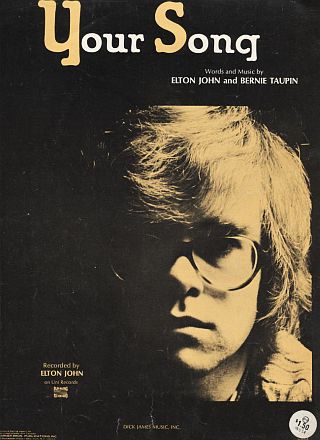
“Your Song” was a kickoff of sorts, the breakthrough song that sent Elton John and Bernie Taupin on their way to the big time. As The Rolling Stone Encyclopedia of Rock and Roll would say of the prolific output of John and Taupin in the 1970s:
“…For most of the `70s Elton John and lyricist Bernie Taupin were a virtual hit factory with 26 Top 40 hit singles, 16 Top 10, and six No.1 hits. Fifteen of the 19 albums released in the United States during this time went gold [500K] or platinum [1 million]. In the `80s their fortunes declined only slightly. To date [as of 2001] they have achieved more than four dozen top 40 hits and become one of the most successful songwriting teams in pop history…”
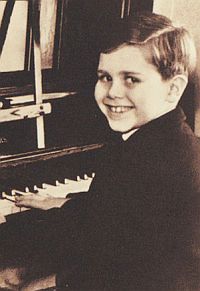
Elton John was born Reginald Kenneth Dwight in a London suburb in March 1947. “Reggie,” as he was called growing up, learned to play piano at an early age, and was somewhat gifted with an ear for melody and could play classical pieces from memory.
John’s parents were fairly strict, with his father encouraging him to pursue a more conventional career. However, both parents were musically inclined and record collectors, among which were Bill Haley and Elvis Presley recordings that young Reggie liked most.
At the age of 11, Reggie won a junior scholarship to the Royal Academy of Music, where he attended Saturday morning sessions for several years. At school on occasion – presaging his later stage antics – Reggie would imitate the raucous piano style of rocker Jerry Lee Lewis. By age 15, he was playing piano in a local pub. In 1962 he formed a band named Bluesology, and two years later, dropped out of school to pursue music full time.
Bernie Taupin
By June 1967 John met his life-long songwriting partner, Bernie Taupin after both had separately answered the same magazine ad in the New Musical Express — an ad seeking songwriters. Taupin was born in 1950 at a farmhouse in eastern England, where he grew up, a somewhat rural area that would color his later lyrical life. Not a keen student, but having a flair for writing, Taupin at age 15 worked briefly in the print room of the local newspaper, The Lincolnshire Standard , with thoughts of possibly becoming a journalist. When that did not work out, he drifted through various part-time jobs until answering the New Musical Express ad for songwriters. He and John would prove to be an exceptionally productive pair, as Taupin could sometimes turn out lyrics in less than an hour, while John was equally efficient and would fit Taupin’s words to music without changing the lyrics. When the two first met in 1967, they recorded what would become the first Elton John/Bernie Taupin song: “Scarecrow”. Not long after, “Reggie” would begin using a new name – “Elton John” – which he would formally adopt later.
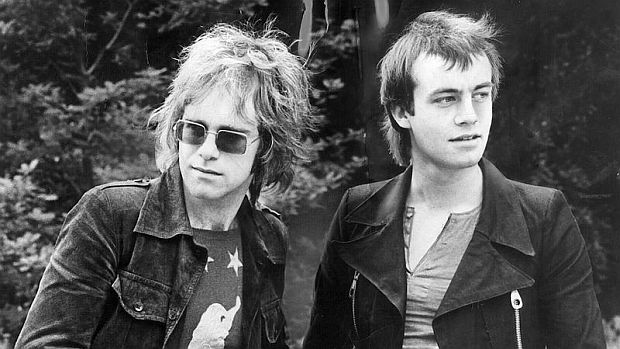
Initially, John and Taupin wrote songs for Dick James Music for other artists, and John also worked as a session musician for groups such as the Hollies. John and Taupin, however, were advised to write for themselves, which they began doing in 1968, producing an early album titled Empty Sky . The album was recorded during the winter of 1968 and spring of 1969. It was released in the U.K. in early June 1969. However, neither it nor other early John-Taupin tunes were making much headway in the U.K. And that’s about when Dick James got the idea of sending Elton to America, which Elton initially resisted.
U.S. Breakout
The Troubadour
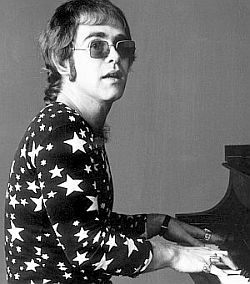
Still, the album had been sent to a number of U.S. venues hoping to receive some U.S. exposure for the new British singer and piano player. Doug Weston, owner of the Troubadour nightclub in West Hollywood, Los Angeles was one of those receiving the album – along with a request for John to perform at his club. Weston, upon hearing the album, booked John for some late August shows.
The Troubadour by then was already well known for being a center for 1960s folk music and would help launch the careers of a long list of singer-songwriters and rock musicians. But Dick James’ sending Elton John to America in this case was actually something of a last attempt to get John’s music across to the public.
Meanwhile, a single from the Elton John album, “Border Song,” had made a modest entrance on the Billboard Hot 100 by the time of Elton’s first Troubadour show in late August 1970. Local FM radio had also been playing his songs leading up to the show. So there was a rising interest among musicians, music industry reps, and music critics leading up to his appearance on August 25, 1970.
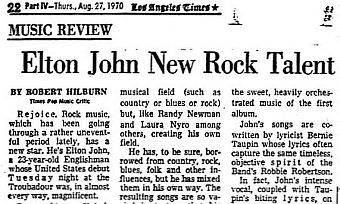
Also in the audience that night were Quincy Jones, Mike Love of The Beach Boys, David Crosby, Gordon Lightfoot, Leon Russell, Danny Hutton of Three Dog Night, Linda Ronstadt, and other notables.
John performed a nine-song set that night, leading off with “Your Song” followed by “Bad Side of the Moon,” “Sixty Years On,” “I Need You To Turn To,” “Border Song,” “Country Comfort,” “Take Me To the Pilot,” “Honky Tonk Woman” (a Rolling Stones cover), and “Burn Down the Mission.” Five of the songs were from the Elton John album, and two others from a later planned album.
John did not disappoint with his performance that night, as he received a rousing response from the audience (some years later, in 1990, Rolling Stone magazine declared these shows to be among the 20 most important concerts in the history of rock ‘n’ roll).
“Tuesday night at the Troubadour was just the beginning. He’s going to be one of Rock’s biggest and most important stars.” – Robert Hilburn, L.A. Times In the next day’s Los Angeles Times , rock critic, Robert Hilburn, gave the show a rave review, opening with: “Rejoice. Rock music…has a new star. His name is Elton John, a 23-year old Englishman whose United States debut at the Troubadour… was, in almost every way, magnificent.” Hilburn reported that the crowd – including the largest local gathering of rock writers in months – “roared its approval, bringing John back for an encore.” Hilburn added that by the end of the evening: “there was no question about John’s talent and potential. Tuesday night at the Troubadour was just the beginning. He’s going to be one of Rock’s biggest and most important stars.”
Thereafter, it was “Katie bar the doors!” First, there was a brief U.S. tour following the Troubadour shows that ran from October 29th through December 4th. One of these shows at the A&R Studios in New York City was recorded for a later live album. Then, for the rest of the decade, the Elton John/Bernie Taupin mind-meld kicked in at full speed, turning out a continuing stream of hit albums and hit singles. (Click on any of the album or singles covers displayed below to visit respective Amazon.com pages).
A Decade of Hits
During 1971 alone, there were four new albums, each of which reached Billboard’s album chart – the western-themed Tumbleweed Connection ; the soundtrack to an obscure film, Friends ; the live album 11-17-70 , recorded on that date at a New York radio station; and Madman Across the Water , which contained the hit singles “Tiny Dancer,” “Levon,” and the title track. Honky Chateau , which appeared in 1972, included hit singles “Honky Cat” and “Rocket Man.”
In fact, from 1972 to 1975, there would be seven consecutive albums that topped the charts: Honky Chateau (1972, No.1 for five weeks), Don’t Shoot Me, I’m Only the Piano Player (1973, No.1 for two weeks), Goodbye Yellow Brick Road (1973, No.1 for eight weeks), Caribou (1974, No.1 for four weeks), Elton John – Greatest Hits (1974, No. 1 for ten weeks), Captain Fantastic and the Brown Dirty Cowboy (1975, No.1 for seven weeks) and Rock of the Westies (1975, No. 1 for three weeks).
These seven albums topped the album chart for a combined total of 39 weeks, meaning that during the mid-1970s, Elton John had a No.1 album about every fourth week.
( See below: “An Elton John Chronology” for listing of album covers and more detail).
As for hit singles, according to the Rock and Roll Hall of Fame, during the three-year period 1973-1976, John amassed 15 hit singles in the U.S., including six that went to No.1 – “Crocodile Rock,” “Bennie and the Jets,” “Lucy in the Sky With Diamonds,” “Philadelphia Freedom,” “Island Girl,” “Don’t Go Breaking My Heart”. Three others were No. 2 hits – “Daniel,” “Goodbye Yellow Brick Road,” “Don’t Let the Sun Go Down on Me”.
Those 15 singles logged a combined 156 weeks from 1973-1976, which is to say that, on average, an Elton John single could be found in the Top 40 every week for three years.
What follows below is a general 1970s chronology of Elton John’s hit singles, albums, and a selection of a few other career highlights from that decade. To be sure, there is much more to John’s career beyond the 1970s, which stretches another 40 years through the 2010s to the present day. And some of the story for those years is covered below the chronology, where the narrative continues.
_____________________________________________
An Elton John Chronology 1970s Music & Other Events (not a complete list)
1969-1975 Elton John’s first studio album, Empty Sky , is produced in the U.K. and released there in 1969, but not in the U.S. until 1975.
10 April 1970 Elton John’s second studio album – titled Elton John – is released in the U.K., peaking at No. 5 and spending 22 weeks on that chart. In the U.S., it is John’s debut album, released there on July 22nd, peaking on Billboard at No. 4. It is also nominated for an Album of the Year Grammy. Some years later it would be inducted into the Grammy Hall of Fame.
24 April 1970 Release of “Border Song” single from Elton John album flopped in the UK, but later peaked in Canada at No. 34, John’s first chart appearance in any country. “Border Song” would also hit No. 92 on U.S. Billboard chart by Oct 1970.
25 August 1970 U.S. breakout after performance at Trouba-dour club in Los Angeles, CA; gets rave review in L.A Times .
30 October 1970 Tumbleweed Connection , 3rd studio album released in the U.K. on this date; U.S., January 1971; peaks at No. 2 in the U.K., No.5 on Billboard . On this album, John and Taupin were influenced by American country rockers, The Band and 1968’s Music From Big Pink , as well as western TV shows they grew up watching. No U.S. singles issued from this album, but “Come Down in Time,” sampled below, with its strings, harp, oboe, and horn, offers a quiet love song.
Music Player “Come Down in Time”- John/Taupin From Tumbleweed Connection https://pophistorydig.com/wp-content/uploads/2019/05/Elton-John-Come-Down-In-Time.mp3
31 December 1970 During 1970, Elton John had performed at 71 concert venues or made other appearances.
23 January 1971 “Your Song” single – from Elton John album – reaches No.8 by this date. Began as the B-side to “Take Me to the Pilot” before radio DJs discovered its gold. Later added to the Grammy HOF (1998) and also ranked No. 137 on Rolling Stone 500.
5 March 1971 Friends film soundtrack album released – a pre-U.S. breakout John/Taupin project that nonetheless went Gold by April 1971. Also received 1972 Grammy nomination for Best Original Score for a Motion Picture
10 April 1971 “Friends” single from the Friends soundtrack hits No. 34 on Billboard at this date.
10 May 1971 First live album released – titled 17-11-70 – recorded at the A&R Studios in New York City, Nov 1970, during post- Troubadour U.S. tour. Also scored Top 40 rank on album charts.
5 November 1971 Madman Across the Water , 4th studio album released. While only reaching No. 41 on the UK charts, Madman did better in the U.S., peaking at No. 8 on Billboard and No. 10 on 1972 year-end list. It achieved Gold standing in Feb 1972, and $1 million in U.S. sales. By 1998, it was multi-Platinum in the U.S., with sales of more that 2 million units.
11 November 1971 John & band perform most of Madman album before a small studio audience at BBC-Television Centre in London for broadcast on April 29, 1972 edition of “Sounds For Saturday” show on BBC2.
31 December 1971 During 1971, Elton John had performed at 129 concerts or made other appearances.
5 February 1972 “Levon” single (from Madman ) – a song about a yearning young boy seemingly stuck in a boring place but bound by family business or local convention – hits No. 24 on the U.S. Billboard chart and No. 6 on Canadian chart.
Music Player “Tiny Dancer”- John/Taupin From Madman Across The Water https://pophistorydig.com/wp-content/uploads/2019/05/Elton-John-Tiny-Dancer.mp3
7 February 1972 “Tiny Dancer” single (from Madman ) is released – believed to be about Bernie Taupin’s wife at the time, Maxine Feibelman, who loved ballet and also did a bit of sewing for Elton. But there are also elements about the free-spirited California girls Taupin met on his 1970 visit there. While a Top 40 hit in several countries, the song got a second wind after being featured in the 2000 film, Almost Famous . Certified 3x Platinum in the U.S., April 2018, and Gold in the UK, August 2018, though not released there as a single.
3 March 1972 “Rocket Man” single released, from Honky Château album, rises to No. 2 in the U.K. and No. 6 in the U.S. Spends more than three months on both charts. The song uses space travel as a metaphor for spiritual isolation. Later certified 3x Platinum, U.S. and No. 245 on RS500. Taupin says he took inspiration from Ray Bradbury’s 1951 short story, The Rocket Man, which also features a lonely astronaut missing his family
Music Player “Rocket Man”- John/Taupin From Honky Château https://pophistorydig.com/wp-content/uploads/2019/05/Elton-John-Rocket-Man.mp3
19 May 1972 Honky Chateau album released; would rise to No. 1 on Billboard 200 and be ranked at No. 359 on RS 500.
23 September 1972 “Honky Cat” single from Honky Château album hits No. 8.
31 December 1972 During 1972, Elton John had performed at 92 concerts or made other appearances.
1973 Elton John and partners launch Rocket Records label, used mostly for other artists.
22 January 1973 Don’t Shoot Me, I’m Only the Piano Player album is released; second straight No. 1 album in U.S. Eventually goes 3× Platinum.
3 February 1973 “Crocodile Rock” single (from Don’t Shoot Me ) became John’s first U.S. No. 1 single on this date, staying there for 3 weeks. Also No.1 in Canada (4 weeks), No 5 in UK. U.S. Gold by Feb 1973, Platinum, Sept 1995.
2 June 1973 “Daniel” single hits No. 2 on Billboard by this date. Taupin wrote “Daniel” after reading a newsmagazine article about Vietnam War veteran who had been wounded and wanted to get away from the attention he was receiving when he went back home. “I wanted to write something that was sympathetic to the people that came home,” Taupin would later say
16 July 1973 “Saturday Night’s Alright For Fighting” single released (from Yellow Brick Road ); hits No. 7 on UK charts, No. 12 on Billboard . Also featured in Grand Theft Auto V video game (2013-14) and film, Kingsman: The Golden Circle (2017).
5 October 1973 Goodbye Yellow Brick Road double album released, reaches No.1, and remains on the album charts for two years. Using Wizard of Oz film imagery, the album is regarded as John’s best. It has sold more than 30 million copies worldwide. In 2000, Q magazine listed it at No.84 on its 100 Greatest British Albums Ever, and in 2003, it was inducted into the Grammy Hall of Fame and also ranked No. 91 on RS 500.
8 December 1973 “Goodbye Yellow Brick Road” single hits No. 1 Canada, No. 2 in U.S., No. 6 in UK. Song is widely praised by critics; some calling it John’s best song. Yellow brick road imagery from 1939 Wizard of Oz film used by Taupin to “get back to [his] roots.” Certified Platinum in 1995 (song sampled later, near end).
31 December 1973 During 1973, Elton John had performed at 91 concerts or made other appearances.
4 February 1974 “Candle in the Wind” (from Yellow Brick Road ) – John/Taupin ode to departed Hollywood starlet, Marilyn Monroe – is released in U.K., reaches No. 11 there but is not released as a single in the U.S. ( Click for separate story ).
13 April 1974 “Bennie and the Jets”(from Yellow Brick Road ) – a song about a fictional band and satire on the greed and glitz of the early 1970s music scene – hits No. 1 in U.S. after heavy play on CKLW radio in Windsor, Ontario, sending song to No. 1 in Detroit, as other markets followed. “Bennie” also found some acceptance on Top 40 R&B radio, especially after John appeared on the Soul Train TV dance show in May 1975 performing the song.
28 June 1974 John’s 8th studio album, Caribou , is his fourth No.1 album in the U.S. and third in the U.K.; nominated for Album-of-the-Year Grammy (1974) and certified 2x Platinum by 1993. The Caribou album is named for the Caribou Ranch studio, where it was recorded, in the Rocky Mountains near Nederland, Colorado, built in 1972. John also recorded the single, “Lucy in the Sky with Diamonds” there, along with its b-side, John Lennon’s “One Day (At A Time).” His next two albums were recorded there as well – Captain Fantastic … and Rock of the Westies , along with part of the single, “Philadelphia Freedom.”
27 July 1974 By this date, “Don’t Let the Sun Go Down on Me” single (from Caribou ) has hit No. 2; song also features Beach Boys Carl Wilson and Bruce Johnston on backing vocals.
3 November 1974 “The Bitch is Back” single (also from Caribou ) hits No.1 in Canada, 4 U.S., 15 U.K. RIAA Gold by Sept 1995. Reportedly, title was inspired by Taupin’s wife at the time, Maxine Feibelman, who would say, “the bitch is back,” when John was in a foul mood. Taupin lyrics also parody John’s celebrity lifestyle. Some radio stations in the U.S. refused to play the song because of the word “bitch,” to which John remarked: “some radio stations in America are more puritanical than others.”
8 November 1974 Elton John’s Greatest Hit s album is released, his first “best of” compilation. It became a No 1 album in both the U.S. (10 wks) and the U.K. (11 wks). In 1975, it was the best-selling album in the U.S., and to date is one of John’s best-selling albums and among best-selling albums of all time, with 24 million copies sold worldwide.
28 November 1974 Thanksgiving Day; John coaxes former Beatle John Lennon onstage for three songs during a Madison Square Garden concert that turned out to be Lennon’s final live public performance.
1974 Elton John signs $8 million deal with MCA – company then reportedly took out a $25 million life insurance policy on John.
31 December 1974 During 1974, Elton John had performed at 69 concerts or made other appearances.
4 January 1975 Elton John cover of Beatles’ “Lucy in the Sky With Diamonds” hits No. 1 (w/John Lennon on guitar).
12 April 1975 “Philadelphia Freedom,” a non-album single, hits No.1 The song was inspired by John’s friendship with tennis superstar Billie Jean King, whose pro team at the time was the Philadelphia Freedoms.
Music Player “Someone Saved My Life Tonight” John/Taupin, from Captain Fantastic … https://pophistorydig.com/wp-content/uploads/2019/05/14-Someone-Saved-My-Life-Tonight-Remastered.mp3
19 May 1975 Captain Fantastic and the Brown Dirt Cowboy album released, described as an autobiographical account of the early musical careers of Elton John (Captain Fantastic) and Bernie Taupin (Brown Dirt Cowboy). It debuted at No. 1 on the U.S. Billboard 200 , believed to be the first album to do so. It sold 1.4 million copies in its first 4 days of release, and stayed at No. 1 for seven weeks
9 August 1975 Elton John named outstanding rock personality of the year at first Rock Music Awards in Santa Monica, California.
16 August 1975 “Someone Saved My Life Tonight” hits No. 4 on Billboard chart – the only single released from Captain Fantastic album. The song is a semi-autobiographical story of John’s ill-fated engagement to Linda Woodrow and his related suicide attempt, as the saving “someone” in the song – Bluesology bandmate and friend, Long John Baldry – convinced him to break off the engagement rather than ruin his music career for an unhappy marriage. John’s performance and piano are perfect in the story-telling, supported with a fine use of backing vocals throughout.
September 1975 “Amoreena,” a song about a young man’s love interest, from John’s 1970 Tumbleweed Connection album, is used over the opening credits of the Al Pacino film, Dog Day Afternoon . The song features John’s powerful piano playing and has a country-rock style from the 1970 Tumbleweed album.
Music Player “Amoreena”- John/Taupin, 1970 From Tumbleweed Connection https://pophistorydig.com/wp-content/uploads/2019/05/Elton-John-Amoreena-Tumbleweed-Connection.mp3
11 October 1975 Neil Sedaka’s “Bad Blood” (on Rocket Records) hits No.1 and features John on harmony vocals.
24 October 1975 Rock of the Westies album enters Billboard chart at No.1 (second in a row to do that in the same year, then unprecedented), and is John’s seventh consecutive No. 1 album. The title is a play on the phrase “West of the Rockies,” as it was recorded at Caribou Ranch studio in the Colorado Rockies. RIAA-certified gold in October 1975 and platinum in March 1993.
25-26 October 1975 Elton John performs two sold-out shows at Dodger Stadium in Los Angeles (55,000 each night). It was part of his “West of the Rockies” tour that included 17 shows across the U.S. and Canada.
October 1975 Elton John becomes the 1,662nd person to receive a star on the Hollywood Walk of Fame.
1 November 1975 “Island Girl,” from Rock of the Westies album hits No.1.
31 December 1975 During 1975, Elton John had performed at 28 concerts or made other appearances.
1976 John, a long-time English soccer/football fan, becomes investor in, and director of, the professional Watford Football Club.
30 April 1976 Here and There live album released; title refers to two concerts: “Here,” a concert at London’s Royal Festival Hall, summer of 1974; and “There,” a concert at New York City’s Madison Square Garden, November 28 1974.
7 August 1976 “Don’t Go Breaking My Heart,” by Elton John and Kiki Dee, tops the U.S. charts for the first of four weeks. Released in June, it also rose to the top of the U.K. charts after three weeks. It was John’s sixth No. 1 hit in 3 years – and his last one in the U.S. for 21 years.
22 October 1976 Blue Moves album released; second double album and first on his own label, Rocket Records. Peaks at No. 3 in U.K. and U.S. Although album suffered some negative reviews – one finding it “impossibly weepy” and another charging “fatigue” – it was still RIAA-certified Gold (Oct 1976) and Platinum (Dec 1976). Includes Edith Piaf tribute song, “Cage the Songbird.”
Music Player “Sorry Seems To Be The Hardest Word” 1976 https://pophistorydig.com/wp-content/uploads/2019/05/Elton-John-Sorry-Seems-To-Be-The-Hardest-Word.mp3
25 December 1976 “Sorry Seems To Be The Hardest Word” single (from Blue Moves album), a ballad about a dying relationship, went to No. 3 in Canada., No. 6 U.S., and No. 11 U.K. – and No. 1 on the U.S. Easy Listening chart. The song was also used in 1977 film Slap Shot starring Paul Newman.
31 December 1976 During 1976, Elton John had performed at 64 concerts or made other appearances.
13 September 1977 Greatest Hits Volume II album is released. Would reach No. 6 in U.K., No. 21 on Billboard , and was certified Gold in September 1977, Platinum in November 1977. There have been several versions of the album.
3 November 1977 Elton John announces at a London concert that he is retiring from live performances, which he does – for 15 months.
31 December 1977 During 1977, Elton John had performed at 13 concerts or made other appearances.
1 October 1978 A Single Man album is released, reaching No. 8 in the U.K. and No. 15 on Billboard . It is Elton John’s 12th studio album and the first with Gary Osborne replacing Bernie Taupin as lyricist. It is the only Elton John album not have any tracks co-written by Bernie Taupin on the original cut. Still, in the U.S., even with mixed reviews, A Single Man was certified Gold in October 1978 and Platinum the following month.
31 December 1978 During 1978, Elton John had performed at 126 concerts or made other appearances.
3 February 1979 Elton John resumes touring after a 15-month hiatus.
21-28 May 1979 Elton John plays eight concerts in the former Soviet Union (USSR). The two-city tour – Leningrad and Moscow – was a significant event amid Cold War tensions of that era and one of the first rock concerts permitted there by a western artist. As a result of John’s visit, in June 1979, the Soviet authorities permitted the state-owned Melodiya record company to issue John’s 1978 album A Single Man, making it the first Western pop album to be officially released in the USSR
June 1979 An EP recording with three songs – The Thom Bell Sessions – is released. It was recorded by Elton John in 1977 in a project with R&B songwriter and producer, Thom Bell, known at the time for his Philadelphia soul music. One of the songs – “Mama Can’t Buy You Love” – became an Elton John Top Ten U.S. single, August 1979. Ten years later, The Complete Thom Bell Sessions was released by MCA, with the original six songs recorded by John and Bell.
13 October 1979 Victim of Love album released: hits No 35 on Billboard , No. 41 in the U.K.
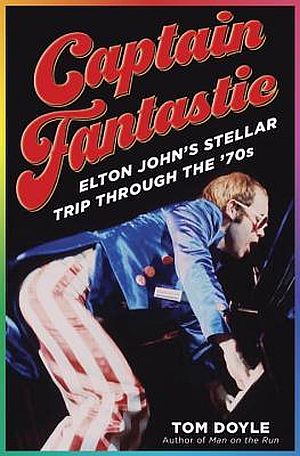
Part of the Elton John success machine of the 1970s evolved from his on-stage concert showmanship and flamboyant costuming.
At the piano, John was an energetic performer, often conducting Jerry Lew Lewis- type acrobatics, beginning with kicking the piano stool out of the way, playing the piano from various contorted positions, to doing flying handstands and horizontal extensions from the piano keyboard – revving up the audience as he did.
In terms of costumes, he used a range of glittery and feathered ensembles, platform shoes, eyeglasses, and more to adorn various fictional and on-stage musical personas. He not only entertained as a talented musician but also broke ground as a kind of “glam rock” fashionista, typically surprising his audience with some new outfit at every show.
As The Rolling Stone Encyclopedia of Rock & Roll has noted:
“In the mid-1970s, John’s concerts filled arenas and stadiums worldwide. He was the hottest act in rock & roll. And his extravagance, including a $40,000 collection of custom-designed and determinedly ridiculous eyeglasses and an array of equally outrageous stagewear, seemed positively charming.”
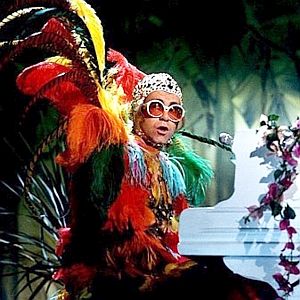
At concerts he would appear in elaborate costume as the Statue of Liberty, Donald Duck, Wolfgang Amadeus Mozart, and other figures. He also appeared with an exaggerated Mohawk hair piece, in a bumble bee costume, as a cowboy, or in various feathered and floral arrangements.
In an appearance on The Muppet Show in June 1977, he wore a large Mummers-parade styled multi-colored floral and feathered ensemble with jeweled white skull cap and matching white-rimed and tinted sunglasses.
He would also dress up for special occasions, as in October 1975, when he received a star on the Hollywood Walk of Fame in Los Angeles, then wearing a special custom-made pale green and white suit with miniature, gold “Elton John sidewalk stars” sewn throughout the jacket, along with matching star-shaped eyeglasses. In 1997, at his 50th birthday party – for 500 friends – he costumed as Louis XIV of France.
Some of his concerts had an air of spectacle to them – as at the Hollywood Bowl in September 1975 where, as introduction, a succession of dressed impersonators of the Queen of England, Elvis Presley, Frankenstein, the Pope, the Beatles, Batman and Robin, Groucho Marx and Mae West all made their entrance down the staircase. Then, a set of concert pianos arrayed there each raised their covers to display a giant series of letters spelling out E-L-T-O-N, and as they did, flocks of doves were released.
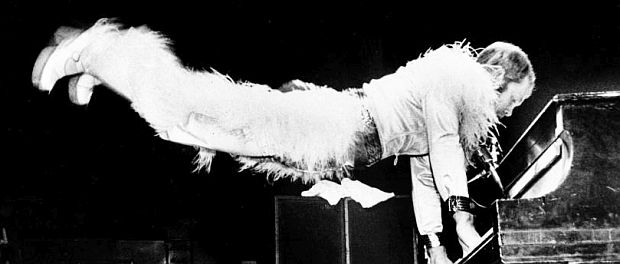
But there were also concerts where the music was what the fans remembered. In October 1975 at Dodger Stadium in Los Angeles– in a white and blue Dodger-like baseball outfit, adorned with silver studs along with a pair of rhinestone-encrusted glasses – he performed 3-hour plus shows before 100,000 raving fans over two nights. It was one of his more successful outings. Elton John was then a pop culture phenom, as photographer Terry O’Neill has observed:
…You have to remember – in October 1975, no one was bigger than Elton John. He was like Elvis at the height of his career. It is impossible to try to explain to people today what it was like – numerous number one albums, touring non-stop, recording non-stop, media, press, television… he was everywhere. Elton still is one of the most talented people I’ve ever met and he gave his all at those concerts.
Over more than 50 years, Elton John would play some 3,000 concerts in more than 75 countries around the world – and he’s not done yet, as his farewell tour with 300 more dates is slated to close in 2020.
Among other memorable Elton John imagery from the mid-1970s was his appearance as the pinball wizard of the famous Who song and rock opera album, Tommy – in the 1975 rock opera film of that name. John appeared as a very tall “Pinball Wizard” rigged on stilted giant boots.
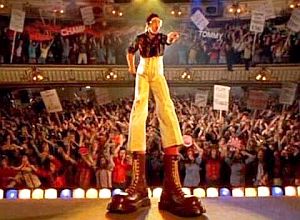
John’s version of the song was recorded and used for the movie release in 1975 and a single of the song was later released as well, charting at No. 7 in England. John’s version of that song is the only cover of a Who song to reach the Top 10.
The Bally Company, meanwhile, later released a “Captain Fantastic”-themed pinball machine featuring an illustration of Elton John on the machine’s main glass facing.
Living Large
Through the 1970s and 1980s Elton John soared to the top of the rock world. He played the most famous venues, became a media darling, and made millions of dollars. He also began living large as the good times flowed – “sex, drugs, and rock & roll,” as they say. But behind the success and flamboyance there were some real-life consequences that caught up with John by mid-career.
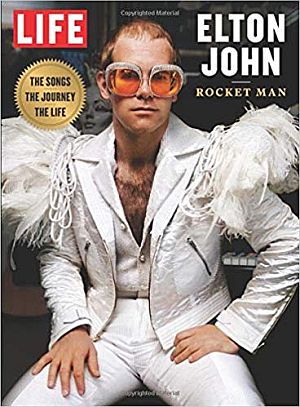
“Success was fantastic and then I couldn’t cope with it,” John explained in one interview about the film and his life, including his personal struggles, which he said he didn’t want covered up or glossed over in the film. “[Y]ou can’t leave out the bad,” he said, of those parts which are included in the film.
“Everyone knows I had quite a lot of [sex and drugs] during the ’70s and ’80s,” he explained during a May 2019 interview in The Guardian . “So there didn’t seem to be much point in making a movie that implied that after every gig, I’d quietly gone back to my hotel room with only a glass of warm milk and the Gideon’s Bible for company.”
Still, those scenes are painful for John. “…It’s difficult to watch [them in the film] because I thought, ‘God, I don’t want to go back there. Thank God I came out of it.”
In earlier interviews, John has spoken about his past excesses and his struggles with alcohol, drugs and food:
“I would have an epileptic seizure and turn blue, and people would find me on the floor and put me to bed. Then 40 minutes later I’d be snorting another line [of cocaine]…This is how bleak it was, I’d stay up, I’d smoke joints, I’d drink a bottle of Johnnie Walker and then I’d stay up for three days….I’d binge and have three bacon sandwiches, a pot of ice cream and then I’d throw it up because I became bulimic. And then go and do the whole thing all over again. That is how tragic my life was.”
“This is Elton John circa the late 1980s,” adds Time magazine, also reviewing Rocketman . “He may be one of the world’s richest and most successful rock stars, but he’s also an alcoholic, a cocaine addict and a bulimic. He’s addicted to sex and he has an anger-management problem. He loves prescription painkillers and he can’t stop shopping. He’s alternately agitated and demonically animated as he rattles off his list of flaws and vexations.” By the 1990s, John got treatment, pulled through it all, and got his head on straight.

John also struggled with his sexuality for much of his career – married once, announced he was bisexual, then homosexual. Openly gay since 1988, he met David Furnish in 1993, a former advertising executive from Toronto, and the two began a relationship. They entered into a civil partnership in December 2005, and after same-sex marriage became legal in England and Wales, they married in December 2014. Today they have two young children born with the help of a surrogate mother.
Wealth & Generosity
With his rapidly rising success in the 1970s, wealth came quickly to Elton John – and continued to come to him over the next four decades with touring, more hit songs, film and stage productions, Las Vegas performing, and legacy publishing fees and royalties.
In recent years, his personal wealth has been estimated in the $250-$400 million range. A few higher estimates have been closer to $500 million. Bernie Taupin, meanwhile, is believed to have amassed an estimated $70 million fortune through his partnership with John.
In any case, Elton John’s fortune will likely get a bump up following his final concert tour. In September 2018, John began his three-year, 300-date “Farewell Yellow Brick Road Tour” that is expected to gross something north of $400 million.
According to one touring analyst, Pollstar, John grosses about $1.4 million per tour stop. Given 300 arena shows planned on his final tour through 2020, that could translate to $420 million in ticket sales for the entire tour – leaving out tour merchandise.
Meanwhile, in terms of real estate, in addition to his main home in Berkshire, England, John also owns residences in Atlanta, London, Los Angeles, Nice and Venice.
In 1991, he bought a condo in the Buckhead area of Atanta, Georgia in the Peachtree Heights West neighborhood, starting out with a 5,000 square foot unit, then expanding into several neighboring units, making a two-story art gallery in one.
Elton John is also an art collector, and is believed to have one of the largest private photography collections in the world.
In November 2016 through May 2017, an exhibit of some of his photos ran at the Tate Museum in London under the title, “The Radical Eye: Modernist Photography from the Sir Elton John Collection.” It appears that he and partner David Furnish have agreed to donate some of these works to the nation.
Also a car collector until recent years, when in June 2001 he sold a 20-car collection of Ferraris, Rolls-Royces, Bentleys and Jaguars through Christies that brought in nearly £2 million.
Able to burn through money with the best of them, especially as he churned up the ladder of fame, Elton John was, and continues to be, quite generous with his wealth and celebrity, using both to bring attention to various social causes and raising money for a range of charities.
In July 1985, along with others including Paul McCartney, Queen, David Bowie and U2, he performed at the Live Aid benefit concert for famine relief at Wembley Stadium in London. In 1986, he joined with Dionne Warwick, Gladys Knight and Stevie Wonder to record the single “That’s What Friends Are For,” with all profits donated to the American Foundation for AIDS Research.

Since its founding, the EJAF has raised something north of $350 million for HIV/AIDS treatment and prevention and has become one of the largest HIV/AIDS grant-makers in the world. In addition to his AIDS work, John also supports the Breast Cancer Research Foundation as well as scholarship funding for students at the Royal Academy of Music, Wright State University, and the Juilliard School. He also has established the Elton John Charitable Fund, which has directly supported nearly 100 organizations, including the American Cancer Society and Big Brothers Big Sisters.
In 1993, he began hosting his annual Academy Award Party in Hollywood, which has become one of the highest-profile Oscar parties and has raised over $200 million.
Back in England, John annually hosts a “celebrity-must” White Tie & Tiara Ball at his Berkshire home where a typical menu might include a truffle soufflé, surf and turf, and Knickerbocker glory ice cream, followed by benefit auctions of famous artwork, rare antique automobiles, and entertainment by the likes of a Tom Jones, Shirley Bassey and others. Tens of millions have been raised by these balls for the Elton John Aids Foundation. He has also hosted or participated in a number of AIDS benefit concerts. In 2012 he published the book, Love is the Cure: On Life, Loss and The End of Aids , which became a best seller.
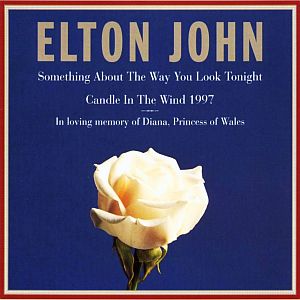
In 2001, one month after the September 2001 attacks on the World Trade Center, John appeared at the Concert for New York City, where he performed a memorable version of “Mona Lisa and Mad Hatters”. Through the 2000s and 2010s, John has continued to lend his celebrity in support of various social causes around the world.
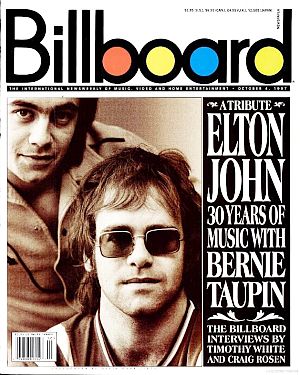
Meanwhile, Elton John and Bernie Taupin have given the world an enormous musical legacy that will be enjoyed for many years into the future. After their frenetic success in the 1970s, Elton and Bernie took a two-year hiatus from each other (1979-1980), during which time they worked with other writers and artists. But not long thereafter, they resumed their partnership, co-writing several songs on the 1981 album, 21 at 33 , and were back in full partnership by 1983’s Too Low for Zero album. Through the 1980s, 1990s and beyond they continued to pen many more songs.
Their work over the years has not only been musically appealing, but also bears a message or two here and there, defines personal feelings that have universal appeal, or offers a commentary on the times or the human condition. Millions of listeners who love the songs of Elton John have their own personal favorites, and listener polls, music magazine rankings, and sales data have identified a number of Elton John tunes regarded as most popular, most loved, most moving, etc..
Some of these have been the top hits, such as “Tiny Dancer,” “Levon,” “Rocket Man,” “Daniel,” and others. But also buried in the Elton John / Bernie Taupin oeuvre are songs that have not necessarily been pop hits, or even released as singles, but are nonetheless popular with listeners. Among these, might be, for example, “The Mona Lisas and Mad Hatters,” “Come Down in Time” (sampled earlier above), “Take Me to the Pilot”, “Razor Face” “My Father’s Gun”, “Border Song”, “Amoreena” (also sampled above), “Grey Seal”, “Funeral For a Friend”, and any number of others.
Yet, of all the songs Elton John and Bernie Taupin have penned together, perhaps few are more poignant than “Goodbye Yellow Brick Road,” sampled below. Among his platinum-level hits, and popular globally, this song was not as big a hit as “Tiny Dancer,” “Rocket Man,” “Levon,” or “Your Song.” Still, it is among those John/Taupin songs that many fans and music critics single out.
Music Player “Goodbye Yellow Brick Road” Elton John/ Bernie Taupin – 1973 https://pophistorydig.com/wp-content/uploads/2019/05/Elton-John-Yellow-Brick-Road-Amazon.mp3
The song and the album of the same name, use the phrase and iconic imagery from the 1939 film, The Wizard of Oz . There, and in other historic uses dating to the 1900s and the books of Frank Baum, upon which the film is loosely based, “the road of yellow bricks” has the implied meaning of a pathway upon which one might find some kind of reward, happiness, inner peace, and/or personal redemption. At least that is the seeming promise. It is also sometimes referred to as a metaphor for “the road that leads to life’s answers” or “the road that leads to life’s fantasies”.
In the film, of course, in the Land of Oz, it is the pathway to see the Wizard in the Emerald City. The Wizard is sought for his powers by Dorothy and her friends. But to make a long story short, the wizard doesn’t really have any special powers and he isn’t really a wizard.
The Wizard of Oz was reportedly the first film that Bernie Taupin had ever seen, and he used the imagery in the lyrics to relate to his own life. At the time he wrote “Goodbye Yellow Brick Road,” he wanted to live a more tranquil existence after experiencing the frenetic 1970s success he and John were having during the height of Elton John mania – a desire to get back to his roots; back, perhaps, to a more real world setting. No more “promised land” for him, say the lyrics; he prefers hearing the owls and ploughing the land over penthouse living and vodka and tonics.
Bernie Taupin’s lyrics in this song have the visceral power of nostalgia, of looking back, of longing for a past that is colored by the thought that, “yes, it was a better time back then.” And for many, that is a universal kind of sentiment. In addition, “the yellow brick road” imagery and concept, known to millions, is the perfect vehicle for innocent hope or nostalgic longing. And in this song’s delivery, Elton’s voice and the melody drive those kind of notions deep into the listener’s emotional core. Together, the song’s moving orchestral arrangement, along with Elton’s powerful vocals, elevate the lyrics to make this song a classic. Stewart Mason’s review of the song at AllMusic.com notes: “…Elton John’s “Goodbye Yellow Brick Road” is a small masterpiece of ’70s soft rock, and a strong contender for the coveted title of John’s finest song ever.”
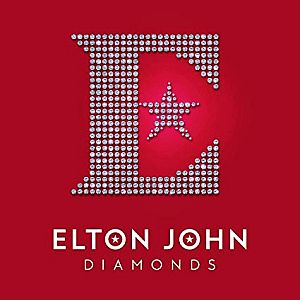
Elton John and Bernie Taupin have been among most successful teams in popular music. They have collaborated on more than 30 albums. A total of more than 300 million Elton John records have been sold worldwide, making him one of the best-selling music artists of all time. To date, he has had more than fifty Top 40 hits, as well as seven consecutive No. 1 albums in the U.S., along with 58 Billboard Top 40 singles, 27 in the Top Ten, four at No.2, and nine at No.1. In his U.K. homeland he has scored 69 Top 40 singles, including 32 Top Tens and seven at No.1.
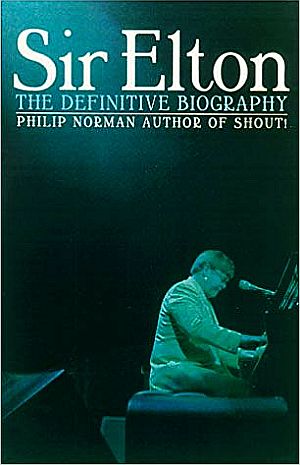
In fact, in the entertainment world, Elton John is distinguished as one of that rare group who have won an Oscar, a Grammy, and a Tony.
Over his career, he has been nominated for 34 Grammy Awards, winning six including, one honorary Grammy.
In film, he has been nominated for three Academy Awards, winning once for Best Original Song for “Can You Feel The Love Tonight” from The Lion King (1994). And in the theater, he has been nominated for four Tony Awards, winning once for Best Original Score in 2000 for Aida .
In addition to these, he has also five Brit Awards – two for Outstanding Contribution to Music and the first Brits Icon award in 2013 for his “lasting impact on British culture”. He has also won a Golden Globe Award, a Disney Legends award, and received the Kennedy Center Honor in 2004.
Elton John – make that “Sir Elton” – has also been knighted by Queen Elizabeth II for “services to music and charitable services.” In music, he was inducted into the Rock & Roll Hall of Fame in 1994. Ten years later, Rolling Stone ranked him at No. 49 on its 2004 list of 100 influential musicians of the rock and roll era. In 2018, Billboard placed him among the very top of successful solo artists on the Billboard Hot 100 – 3rd on the list of Top Artists of All Time, behind only the Beatles and Madonna and ahead of Elvis Presley. And there are still other awards, honors, collaborations, new Elton John ventures, and more. For further detail on these, see “Sources” below or visit his website at EltonJohn.com .
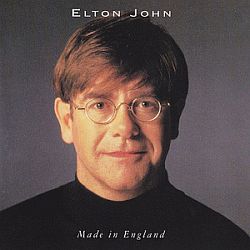
John’s 3-year farewell tour, begun in 2018, is slated to end in England in December 2020 after some 300 shows. But there will likely be a new Elton John song or two yet to come.
In any case, the music of Elton John – and especially those indelible John /Taupin creations of the 1970s – will live on well into the future.
See also at this website, “ Candle in the Wind, 1973-1997 ,” about the Marilyn Monroe and Princess Diana songs that John and Taupin wrote, or check out the “Annals of Music” category page for additional stories that profile artists, song histories, and the music industry.
Thanks for visiting – and if you like what you find here, please make a donation to help support the research, writing and continued publication of this website. Thank you. – Jack Doyle
____________________________________
Date Posted: 31 May 2019 Last Update: 17 April 2020 Comments to: [email protected]
Article Citation: Jack Doyle, “Elton John’s Decade: 1970s (w/Bernie),” PopHistoryDig.com , May 31, 2019.
Sources, Links & Additional Information
“Elton John,” in Holly George-Warren and Patricia Romanowski (eds), The Rolling Stone Encyclopedia of Rock & Roll , Rolling Stone Press, New York, 3rd Edition, 2001, pp. 500-502.
Robert Christgau, “The Little Hooker That Could,” The Village Voice , November 24, 1975.
Robert Christgau, “Elton John,” in Anthony De Curtis and James Henke (eds), The Rolling Stone Illustrated History of Rock & Roll , Random House, New York, 1992, pp. 528-531.
“The 1970s,” EltonJohn.com .
“Biography, Elton John,” 1994 Induction, Rock & Roll Hall of Fame.
“Elton John,” Wikipedia.org .
“Elton John, Chart History,” Billboard.com .
Ben Fong-Torres, “Elton John: The Four-Eyed Bitch Is Back; Elton Is Hard to Talk to When Anybody’s Around. By Himself, He’ll Talk,” Rolling Stone , November 21, 1974.
David Rensin,”Performance: Elton at the Hollywood Bowl, 9/7/73,” Rolling Stone , October 11, 1973.
“Elton John: Rock’s Captain Fantastic,” Time (cover story), July 7, 1975.
Matt Ballinger, “Times Critic Was Early Champion of Elton John,” L.A. Times Past/Tumbler.com , October 3, 2013.
Paul Sexton, “The Troubadour Nights That Changed Elton John’s Life; Why 25 August 1970 Was Such a Monumental Occasion in the Career of a Young English Singer-Songwriter,” uDiscoverMusic.com , August 25, 2018.
Elton John Interview, “A More Reflective Leap On Elton John’s ‘Diving Board’,” Fresh Air/ NPR.org , September 23, 2013.
Stephanie Zacharek, “A Glitter-Fueled Rocket-man Blasts Off, Time , June 3-10, 2019, pp. 93-95.
“Elton John: 20 Essential Songs,” The Tele-graph , October 20, 2015.
“Readers’ Poll: The Best Elton John Songs of All Time Your Picks Include ‘Levon,’ ‘Your Song’ and ‘Rocket Man’,” Rolling Stone , November 28, 2012.
“Elton’s First Shows in the U.S. – A Look Back,” EltonJohn.com , August 25, 2017.
“Bernie Taupin,” Wikipedia.org .
“Captain Fantastic and the Brown Dirt Cowboy,” Wikipedia.org .
“Madman Across The Water – BBC Sounds for Saturday, London, UK: 1971,” EltonJohn.com .
“Elton John 1970 World Tour,” Wikipedia .org .
“Elton John Tour Statistics,” SetList.fm .
“Border Song,” Wikipedia.org .
Cal Fussman, “Bernie Taupin: What I’ve Learned,” Esquire , January 2, 2012.
“Levon by Elton John,” SongFacts.com .
Tiny Dancer,” Wikipedia.org .
“Bernie Taupin Interview,” Billboard , October 4, 1997.
Mark Simonian, “Bowls Hollywood Over; Elton John ‘Puts On’ Concert,” The Stanford Daily , Volume 164, Issue 4, September 27, 1973.
Elton John’s 1979 Tour of the Soviet Union,” Wikipedia.org .
“1970s Decade Overview,” RockMusicTimeline .com .
“Photos: Elton John’s Outfits Through the Years; See All the Sunglasses, Animal Costumes and Chest Hair from 1973 On,” RollingStone.com , February 2, 2011.
Kimberley Dadds (BuzzFeed Staff, UK), “The 28 Most Flamboyant Elton John Stage Costumes Ever,” BuzzFeed.com , March 5, 2014.
Doug Fox, “Inside Elton John’s Historic Sold-Out Shows at Dodger Stadium,” Ultimate ClassicRock.com , October 25, 2015.
“Dodger Stadium 1975 – Game On!,” Elton John.com , August 28, 2018.
Marc Myers, “Bernie Taupin Tells the Story Behind 1972’s ‘Rocket Man.’ Inspired by Ray Bradbury’s Tale About an Astronaut, The Song Became an Unlikely Catch Phrase in Trump’s Tweets,” Wall Street Journal , April 4, 2018.
Dave Simpson, “Elton John’s 50 Greatest Songs, Ranked!,” TheGuardian.com (London), September 13, 2018.
Ed Power, “This One’s for You: The Story Behind Elton John’s Hit ‘Your Song’,” The Independent (London), November 15, 2018.
“The Boy & The Piano,” John Lewis Christmas Advert, 2018.
Roisin O’Connor, “John Lewis Christmas Ad: Elton John Tribute With ‘Your Song’ As Soundtrack Could Melt the Flintiest of Hearts,” The Independent (London), November 15, 2018.
Zack O’Malley Greenburg, “Elton John’s Retirement Tour Should Gross More Than $400 Million,” Forbes , January 24, 2018.
Jessica Napoli, “Elton John Reveals His Most ‘Difficult’ Scenes To Watch in ‘Rocketman’ Biopic,” Fox News , May 26, 2019.
Kristin Corpuz, “Elton John’s Biggest Billboard Hot 100 Hits,” Billboard.com , March 25, 2017.
Paul Sexton, “50 Years Of Diamonds From Elton John And Bernie Taupin,” uDiscover Music.com , January 24, 2018.
“Farewell Yellow Brick Road,” Wikipedia.org .
Hannah Taheri, “Top 10 Most Iconic Elton John Ensembles,” Golden1Center.com , Janu-ary 7, 2019.
Kathryn Vasel, “The World’s 10 Richest Recording Artists,” CNN Business , December 2, 2014.
Aisling Moloney, “What is Bernie Taupin’s Net Worth? Elton John’s lyricist Has Made a Serious Fortune,” MetroUK , November 13, 2017.
Ben Hirsh, “Does Elton John Really Live In Buckhead?,” Buckhead.com , May 4, 2016.
“Elton’s Photography Collection Now on Display at Tate Modern,” EltonJohn.com , November 10, 2016.
“Elton John Op-Ed on Tirelessly Fighting AIDS Through His Foundation: ‘We Have So Much Work Left to Do’,” (Cover Story), Billboard.com , October 15, 2015.
Stewart Mason, Song Review, “Elton John: Goodbye Yellow Brick Road,” AllMusic.com .
Rob Sheffield, “Elton John’s Greatest Non-Hits; For every “Rocket Man” or “I’m Still Standing,” There Are Countless Other Lost Gems Ripe For Rediscovery, From Stripped-Down Ballads to Decadent Glitter Epics,” Rolling Stone , February 2, 2011.
“Top 33 Forgotten / Overlooked Elton John Songs,” NeedSomeFun.net , July 4, 2017.
Billboard staff, “The Hot 100’s Top Artists of All Time,” Billboard.com , August 2, 2018.
__________________________
The Pop History Dig is a website offering historical and topical stories on business, politics, and popular culture.
Elton John Concerts 1970s
- View history
March 25, 1970 Revolution Club, London, ENG
April 7, 1970 Roundhouse, London, ENG
April 21, 1970 Roundhouse, London, ENG ( Pop Proms 1970 , supporting T-Rex, with Pretty Things & Heavy Jelly. Hosted by John Peel)
May 7, 1970 Roadhouse, London, ENG
May 9, 1970 Slough College Main Hall, Slough, ENG
May 22, 1970 BBC Studios, London, ENG
May 30, 1970 Mothers, Birmingham, ENG
June 5-6, 1970 Marquee, London, ENG
June 13, 1970 Queens Hall, Narberth, WAL
June 17, 1970 Lyceum, London, ENG
June 19, 1970 Mantorp's Racing Circuit, Östergötland, SWE
June 21, 1970 Roadhouse, London, ENG
June 26, 1970 St. Mary's College, Twickenham, ENG
July 3, 1970 Hampstead Country Club, London, ENG
July 4, 1970 Speakeasy, London, ENG
July 11, 1970 Knokke Casino, Knokke, BEL
August 13, 1970 Playhouse Theatre, London, ENG
August 14, 1970 Hillside, Krumlin, ENG (Yorkshire Folk Blues and Jazz Festival)
August 25-30, 1970 Troubadour, Los Angeles, CA
September 1-6, 1970 Troubadour North, San Francisco, CA
September 10, 1970 Playboy Club, New York City, NY
September 11-12, 1970 Electric Factory, Philadelphia, PA
October 2, 1970 Royal Albert Hall, London, ENG (supporting Fotheringay)
October 29-31, 1970 The Boston Tea Party, Boston, MA (supported by Dreams & Rev. Gary Davis)
November 6-7, 1970 Electric Factory, Philadelphia, PA
November 8, 1970 Painters Mill Music Fair, Owings Mills, MD
November 12-14, 1970 Fillmore West, San Francisco, CA (supporting The Kinks)
November 15, 1970 Civic Auditorium, Los Angeles, CA
November 17, 1970 A&R Recording Studios, New York City, NY (broadcast live on FM radio, later released as "17-11-70" live album)
November 20-21, 1970 Fillmore East, New York City, NY
November 22, 1970 University Of Bridgeport, Bridgeport, CT
November 23, 1970 Glassboro State College, Glassboro, NJ
November 25, 1970 Auditorium Theatre, Chicago, IL
November 26, 1970 Music Hall, Cleveland, OH
November 27-28, 1970 Eastown Theatre, Detroit, MI (supported by Catfish, Uriah Heep & Jam Band)
November 29, 1970 Guthrie Theater, Minneapolis, MN (supported by Podipto)
December 1, 1970 Champ Auditorium, Fulton, MO
December 4, 1970 Convention Center, Anaheim, CA
December 5, 1970 Swing Auditorium, San Bernardino, CA
December 6, 1970 UCLA Royce Hall, Los Angeles, CA
December 20, 1970 Roundhouse, London, ENG
January 2, 1971 Mothers, Birmingham, ENG
January 3, 1971 Pavilion, Hemel Hempstead, ENG
January 8, 1971 Country Club, Hampstead, ENG
January 10, 1971 Civic Hall, Guildford, ENG
January 11, 1971 Winter Gardens, Cleethropes, ENG
January 13, 1971 City Hall, Hull, ENG
January 15, 1971 University Old Union Refectory, Southampton, ENG
January 16, 1971 Loughborough University, Loughborough, ENG
January 27, 1971 Philharmonic Hall, Liverpool, ENG
January 29, 1971 University of Lancaster, Lancaster, ENG (cancelled)
January 31, 1971 The Fox, Croydon, ENG
February 1, 1971 Cooks Ferry Inn, Edmonton, ENG
February 5, 1971 Lanchester Polytechnic Main Hall, Coventry, ENG (Lanchester Arts Festival)
February 6, 1971 Leeds University, Leeds, ENG
February 9, 1971 Bumpers, London, ENG
February 12, 1971 Stirling University, Stirling, SCOT
February 13, 1971 Stratchclyde University, Glasgow, SCOT
February 14, 1971 Kinema, Dunfermline, SCOT
February 20, 1971 City Hall, Newcastle, ENG
February 24, 1971 Imperial College, London, ENG
February 26, 1971 Brunel University, Uxbridge, ENG
February 27, 1971 Bradford University, Bradford, ENG
March 3, 1971 Royal Festival Hall, London, ENG
March 6, 1971 Leicester University, Leicester, ENG
March 13, 1971 Kingston Polytechnic, Kingston, ENG
March 14, 1971 Colston Hall, Bristol, ENG
March 20, 1971 University College, London, ENG
March 28, 1971 Fairfield Hall, Croydon, ENG
April 2, 1971 Loew's State Theatre, Providence, RI
April 3, 1971 Boston, MA
April 7, 1971 Spectrum, Philadelphia, PA
April 8-10, 1971 Fillmore East, New York City, NY
April 11, 1971 Painters Mill Music Fair, Owings Mills, MD
April 13-15, 1971 Auditorium Theatre, Chicago, IL
April 16, 1971 Memorial Building, Detroit, MI
April 17, 1971 Veterans Memorial Auditorium, Columbus, OH
April 18, 1971 Music Hall, Cincinnati, OH
April 20, 1971 Civic Auditorium, Omaha, NE
April 21, 1971 Portland, OR
April 23, 1971 Agrodome Theatre, Vancouver, BC
April 24, 1971 Seattle Center Coliseum, Seattle, WA
April 29, 1971 Denver Coliseum, Denver, CO
May 1, 1971 Honolulu International Center, Honolulu, HI
May 9, 1971 Civic Auditorium, San Francisco, CA
May 11, 1971 Sacramento Auditorium, Sacramento, CA
May 12, 1971 Convention Center, Fresno, CA
May 14, 1971 Convention Center, Anaheim, CA
May 15, 1971 Arizona Veterans Memorial Coliseum, Phoenix, AZ
May 16, 1971 Municipal Auditorium, Denver, CO
May 17, 1971 University Of Colorado, Boulder, CO
May 19, 1971 Civic Center Music Hall, Oklahoma City, OK
May 20, 1971 Sam Houston Coliseum, Houston, TX
May 21, 1971 Municipal Auditorium, San Antonio, TX
May 22-23, 1971 Fair Park Music Hall, Dallas, TX
May 24, 1971 Tarrant County Theatre, Fort Worth, TX
May 26, 1971 The Warehouse, New Orleans, LA
May 28, 1971 Curtis Hixon Auditorium, Tampa, FL
May 29, 1971 Jai Alai Arena, Miami, FL
May 30, 1971 Jacksonville Coliseum, Jacksonville, FL
June 4, 1971 Kiel Auditorium, St. Louis, MO
June 5, 1971 Ellis Auditorium, Memphis, TN
June 6, 1971 Convention Center, Louisville, KY
June 8, 1971 Municipal Auditorium, Atlanta, GA
June 10-11, 1971 Carnegie Hall, New York City, NY
June 12, 1971 Cleveland Arena, Cleveland, OH
June 13, 1971 Rhode Island Auditorium, Providence, RI
June 16, 1971 Merriweather Post Pavilion, Columbia, MD
June 18, 1971 Farm Show Arena, Harrisburg, PA
July 8, 1971 Stockholm, SWE
July 31, 1971 Crystal Palace Bowl, London, ENG (Garden Party II, supported by Fairport Convention, Rory Gallagher & Yes)
August 8, 1971 Vilar dos Mouros, POR (Vilar dos Mouros Festival)
August 27, 1971 Wildwood Convention Center, Wildwood, NJ
August 28, 1971 Convention Hall, Asbury Park, NJ
August 30, 1971 Milwaukee Auditorium, Milwaukee, WI
August 31, 1971 Minneapolis Auditorium, Minneapolis, MN
September 2, 1971 Saratoga Performing Arts Center, Saratoga Springs, NY
September 3, 1971 Onondaga War Memorial, Syracuse, NY
September 4, 1971 War Memorial, Rochester, NY
September 6-12, 1971 Greek Theatre, Los Angeles, CA
September 15, 1971 Convention Center, Las Vegas, NV
September 16, 1971 Washoe County Fairgrounds, Reno, NV
September 18, 1971 Community Concourse, San Diego, CA
October 5-6, 1971 Shibuya Kohkaido, Tokyo, JPN
October 7, 1971 Ohsaka Kohsei Nenkin Hall, Ohsaka, JPN
October 8, 1971 Kohsei Nenkin Hall, Osaka, JPN
October 10-11, 1971 Shinjuku Kohsei Nenkin Hall, Tokyo, JPN
October 16-17, 1971 Subiaco Oval, Perth, AUS
October 22, 1971 Memorial Drive, Adelaide, AUS
October 24, 1971 Kooyong Stadium, Melbourne, AUS
October 29, 1971 Western Springs Stadium, Auckland, NZ
October 31, 1971 Randwick Stadium, Sydney, AUS
November 21, 1971 Coventry Theatre, Coventry, ENG
November 22, 1971 Free Trade Hall, Manchester, ENG
November 24, 1971 De Montfort Hall, Leicester, ENG
November 26, 1971 Winter Gardens, Bournemouth, ENG
November 27, 1971 ABC, Plymouth, ENG
November 28, 1971 Colston Hall, Bristol, ENG
December 3, 1971 Town Hall, Birmingham, ENG
December 4, 1971 Dome, Brighton, ENG
December 5, 1971 Fairfield Hall, Croydon, ENG
December 10, 1971 City Hall, Newcastle, ENG (supported by England Dan & John Ford Coley)
December 11, 1971 ABC, Stockton On Tees, ENG
December 16, 1971 Town Hall, Leeds, ENG
December 24, 1971 City Hall, Sheffield, ENG
February 5, 1972 Royal Festival Hall, London, ENG
February 19, 1972 University of Lancaster, Lancaster, ENG (cancelled)
February 20, 1972 Shaw Theatre, London, ENG (benefit of the national youth theatre)
February 23, 1972 Exeter University, Exeter, ENG
February 24, 1972 Town Hall, Watford, ENG
February 26, 1972 Waltham Forest Technical College, London, ENG
February 27, 1972 Shaw Theatre, London, ENG (benefit of the national youth theatre)
March 1, 1972 Music Hall, Aberdeen, SCOT
March 2, 1972 Caird Hall, Dundee, SCOT
March 3, 1972 Kelvin Hall, Glasgow, SCOT
March 4, 1972 Empire Theatre, Edinburgh, SCOT
March 12, 1972 Jahrhunderhalle, Frankfurt, GER
March 20, 1972 Jahrhunderthalle, Frankfurt, GER
April 26, 1972 Heart O' Texas Coliseum, Waco, TX
April 28, 1972 Hofheinz Pavilion, Houston, TX
April 30, 1972 Municipal Auditorium, Austin, TX
May 2, 1972 Brewer Fieldhouse, Columbia, MO
May 3, 1972 Athletic And Convocation Center, South Bend, IN
May 4, 1972 Jenison Field House, East Lansing, MI
May 5, 1972 Memorial Gymnasium, Kent, OH
May 6, 1972 St. John Arena, Columbus, OH
May 7, 1972 Millett Hall, Oxford, OH
May 10, 1972 Assembly Hall, Champaign, IL
May 13, 1972 Field House, DeKalb, IL
June 3, 1972 Crystal Palace Bowl, London, ENG (supporting Beach Boys, with Joe Cocker, Melanie, Richie Havens & Sha Na Na)
August 26, 1972 Guildhall, Portsmouth, ENG (supported by Linda Lewis)
August 27, 1972 Shaw Theatre, London, ENG (supported by Linda Lewis)
August 31, 1972 City Hall, Newcastle, ENG (supported by Linda Lewis)
September 1, 1972 Free Trade Hall, Manchester, ENG (supported by Linda Lewis)
September 3, 1972 Fairfield Hall, Croydon, ENG (supported by Linda Lewis)
September 8, 1972 Green's Playhouse, Glasgow, SCOT (supported by Linda Lewis)
September 10, 1972 New Theatre, Oxford, ENG (supported by Linda Lewis)
September 17, 1972 Shaw Theatre, London, ENG (supported by Linda Lewis)
Legs Larry Tour 1972
September 26, 1972 Barton Hall, Ithaca, NY
September 27-28, 1972 Music Hall, Boston, MA
September 29, 1972 New Haven Arena, New Haven, CT
September 30, 1972 Spectrum, Philadelphia, PA
October 1, 1972 Rochester War Memorial, Rochester, NY
October 2, 1972 Forum, Montreal, QC
October 5, 1972 Maple Leaf Gardens, Toronto, ON
October 6, 1972 Cobo Hall, Detroit, MI
October 7, 1972 Memorial Auditorium, Buffalo, NY
October 9, 1972 Nassau Coliseum, Uniondale, NY
October 11, 1972 Horton Fieldhouse, Normal, IL
October 12, 1972 Civic Center, Wichita, KS
October 13, 1972 Allen Fieldhouse, Lawrence, KS
October 14, 1972 Hilton Coliseum, Ames, IA
October 15, 1972 Auditorium Arena, Denver, CO
October 18, 1972 Honolulu International Center, Honolulu, HI
October 20, 1972 Seattle Center Coliseum, Seattle, WA
October 21, 1972 Community Theatre, Berkeley, CA (supported by Family)
October 22, 1972 Convention Center, Anaheim, CA
October 23-24, 1972 Forum, Los Angeles, CA
October 25, 1972 Community Theatre, Berkeley, CA (supported by Family)
October 26, 1972 Convention Center, Tucson, AZ
October 27, 1972 Sports Arena, San Diego, CA
October 30, 1972 London Palladium, London, ENG (command performance for the queen)
November 1, 1972 Oklahoma State University, Stillwater, OK
November 2, 1972 Assembly Center, Tulsa, OK
November 3, 1972 Fairgrounds Arena, Oklahoma City, OK
November 4, 1972 Municipal Auditorium, Kansas City, MO
November 5, 1972 Memorial Auditorium, Dallas, TX
November 8, 1972 Texas A and M, College Station, TX
November 9, 1972 Municipal Auditorium, San Antonio, TX
November 10, 1972 LSU Assembly Center, Baton Rouge, LA
November 11, 1972 Mid South Coliseum, Memphis, TN
November 12, 1972 Memorial Auditorium, Nashville, TN
November 13, 1972 Scope Auditorium, Norfolk, VA
November 14, 1972 University Of Alabama, Tuscaloosa, AL
November 15, 1972 Atlanta Coliseum, Atlanta, GA
November 16, 1972 Charlotte Coliseum, Charlotte, NC
November 17, 1972 Civic Center, Charleston, WV
November 18, 1972 Hampton Roads Coliseum, Hampton, VA
November 19-20, 1972 Carnegie Hall, New York City, NY
November 21, 1972 Civic Center, Baltimore, MD
November 22, 1972 State Farm Arena, Harrisburg, PA
November 24, 1972 Jacksonville Coliseum, Jacksonville, FL
November 25, 1972 Sportatorium, Hollywood, FL
November 26, 1972 Bay Front Center, St. Petersburg, FL
January 20, 1973 Carnegie Hall, New York City, NY (dusty springfield concert)
February 24, 1973 Starlight Rooms, Boston, ENG
February 25, 1973 Greens Playhouse, Glasgow, SCOT
February 28, 1973 Town Hall, Birmingham, ENG
March 1, 1973 De Montfort Hall, Leicester, ENG
March 2-3, 1973 Empire, Liverpool, ENG
March 5, 1973 The Heavy Steam Machine, Stoke on Trent, ENG
March 6, 1973 Guild Hall, Preston, ENG
March 7, 1973 City Hall, Newcastle, ENG
March 9, 1973 City Hall, Sheffield, ENG
March 11, 1973 Leeds University, Leeds, ENG
March 12, 1973 Imperial College, London, ENG
March 15, 1973 Colston Hall, Bristol, ENG
March 16, 1973 Dome, Brighton, ENG
March 17, 1973 Winter Gardens, Bournemouth, ENG
March 18, 1973 Guildhall, Southampton, ENG
March 22-23, 1973 Edmonton Sundown, London, ENG
March 25, 1973 Coventry Theatre, Coventry, ENG
March 26-27, 1973 Hard Rock, Manchester, ENG
April 11, 1973 Palasport, Napoli, ITY
April 12, 1973 Palazzo Dello Sport, Rome, ITY
April 14, 1973 Palazzo Azzarita, Bologna, ITY
April 17, 1973 Palazzo Dello Sport, Torino, ITY
August 15, 1973 Municipal Auditorium, Mobile, AL (supported by Sutherland Brothers & Quiver)
August 16, 1973 Sam Houston Coliseum, Houston, TX (supported by Sutherland Brothers & Quiver)
August 17, 1973 Convention Centre Arena, San Antonio, TX (supported by Sutherland Brothers & Quiver)
August 18, 1973 Cotton Bowl, Dallas, TX (supported by Steely Dan & Sutherland Brothers & Quiver)
August 19, 1973 Arrowhead Stadium, Kansas City, MO (supported by Sutherland Brothers & Quiver)
August 23, 1973 Sports Center, Minneapolis, MN (supported by Sutherland Brothers & Quiver) (unconfirmed)
August 24, 1973 International Amphitheater, Chicago, IL (supported by Sutherland Brothers & Quiver) (poss 25th as well)
August 26, 1973 State Fairgrounds, Des Moines, IA (supported by Sutherland Brothers & Quiver)
August 28, 1973 University of Utah Special Events Center, Salt Lake City, UT (supported by Sutherland Brothers & Quiver)
August 30, 1973 Memorial Coliseum, Portland, OR (supported by Sutherland Brothers & Quiver)
August 31, 1973 Seattle Center Coliseum, Seattle, WA (supported by Sutherland Brothers & Quiver)
September 1, 1973 Balboa Stadium, San Diego, CA (supported by Steely Dan & Sutherland Brothers & Quiver)
September 3, 1973 University Arena, Albuquerque, NM (supported by Sutherland Brothers & Quiver)
September 7, 1973 Hollywood Bowl, Los Angeles, CA (supported by Sutherland Brothers & Quiver)
September 8, 1973 Long Beach Arena, Long Beach, CA (supported by Sutherland Brothers & Quiver)
September 9, 1973 Coliseum Arena, Oakland, CA (supported by Sutherland Brothers & Quiver)
September 10, 1973 Pacific Coliseum, Vancouver, BC
September 21, 1973 Greensboro Coliseum, Greensboro, NC
September 22, 1973 Atlanta Stadium, Atlanta, GA (supported by Sutherland Brothers & Quiver)
September 23, 1973 Madison Square Garden, New York City, NY (supported by Sutherland Brothers & Quiver)
September 24, 1973 Nassau Coliseum, Uniondale, NY (supported by Sutherland Brothers & Quiver)
September 25, 1973 Boston Garden, Boston, MA (joined onstage by Stevie Wonder. supported by Sutherland Brothers & Quiver)
September 30, 1973 Civic Center, Baltimore, MD (supported by Sutherland Brothers & Quiver)
October 3, 1973 University Of Dayton Arena, Dayton, OH (supported by Sutherland Brothers & Quiver)
October 5, 1973 Cobo Arena, Detroit, MI (supported by Sutherland Brothers & Quiver)
October 6, 1973 St. John Arena, Columbus, OH (supported by Sutherland Brothers & Quiver)
October 7, 1973 Indiana University Assembly Hall, Bloomington, IN (supported by Sutherland Brothers & Quiver)
October 9, 1973 Civic Arena, Pittsburgh, PA (supported by Sutherland Brothers & Quiver)
October 11, 1973 Mid South Coliseum, Memphis, TN (supported by Sutherland Brothers & Quiver)
October 13, 1973 Stokely Athletic Center, Knoxville, TN (supported by Sutherland Brothers & Quiver)
October 18, 1973 Memorial Coliseum, Auburn, AL (supported by Sutherland Brothers & Quiver)
October 19, 1973 University of Georgia Coliseum, Athens, GA (supported by Sutherland Brothers & Quiver)
October 20, 1973 Hollywood Sportatorium, Hollywood, FL (supported by Sutherland Brothers & Quiver)
October 21, 1973 University of Florida Gymnasium, Gainesville, FL (supported by Sutherland Brothers & Quiver)
November 27, 1973 Colston Hall, Bristol, ENG
November 29, 1973 King's Hall, Belle Vue, ENG
December 8, 1973 Empire, Liverpool, ENG
December 10-11, 1973 Apollo, Glasgow, SCOT
December 12, 1973 City Hall, Newcastle, ENG
December 14, 1973 City Hall, Sheffield, ENG
December 15, 1973 American School, London, ENG (supported by Kiki Dee)
December 16-17, 1973 Town Hall, Birmingham, ENG (supported by Kiki Dee)
December 21-23, 1973 Hammersmith Odeon, London, ENG (christmas shows)
February 1-2, 1974 Budokan, Tokyo, JPN
February 3-5, 1974 Kohsei Nenkin Hall, Osaka, JPN
February 7, 1974 Kyuden Kinen Tallkukan, Fukuoka, JPN
February 8, 1974 Yubin Chokin Hall, Hiroshima, JPN
February 9, 1974 Kyoto Kaikan, Kyoto, JPN
February 10, 1974 Festival Hall, Osaka, JPN
February 11, 1974 Civic Hall, Nagoya, JPN
February 13, 1974 Shinjuku Kohsei Nenkin Hall, Tokyo, JPN
February 21, 1974 South Melbourne Football Ground, Melbourne, AUS
February 23, 1974 Milton Tennis Courts, Brisbane, AUS
February ?, 1974 Memorial Drive Tennis Centre, Adelaide, AUS
February 28, 1974 Western Springs Stadium, Auckland, NZ
March 14, 1974 Randwick Racecourse, Randwick, AUS
March 18, 1974 WACA Grounds, Perth, AUS
April 11, 1974 Olympiahalle, Munich, GER
May 5, 1974 Vicarage Road, Watford, ENG (benefit show, With guests Rod Stewart & Nazareth)
May 18, 1974 Royal Festival Hall, London, ENG (invalid children's aid society benefit)
May 27, 1974 Wembley Arena, London, ENG
June 14, 1974 Nassau Coliseum, Uniondale, NY (joined the Beach Boys for their encore of "Barbara Ann" & "Surfin' USA")
Elton John & Kiki Dee US Tour 1974
September 25, 1974 Convention Center, Dallas, TX
September 26, 1974 Hofheinz Pavilion, Houston, TX
September 27, 1974 Municipal Auditorium, Mobile, AL
September 28, 1974 Memorial Coliseum, Tuscaloosa, AL
September 29, 1974 Louisiana State University, Baton Rouge, LA
October 3-6, 1974 Forum, Los Angeles, CA
October 8, 1974 Sports Arena, San Diego, CA
October 9, 1974 Cow Palace, Daly City, CA
October 10, 1974 Coliseum, Oakland, CA
October 12-13, 1974 Seattle Center Coliseum, Seattle, WA
October 14, 1974 Pacific Coliseum, Vancouver, BC
October 15, 1974 Memorial Coliseum, Portland, OR
October 26-27, 1974 Hawaii International Center, Honolulu, HI
October 30, 1974 St. Louis Arena, St. Louis, MO
October 31, 1974 Civic Center, St. Paul, MN
November 1-2, 1974 Chicago Stadium, Chicago, IL
November 3, 1974 Athletic and Covocation Center, South Bend, IN
November 4, 1974 Cleveland Arena, Cleveland, OH
November 8, 1974 Greensboro Coliseum, Greensboro, NC
November 9, 1974 Stokely Athletic Center, Knoxville, TN
November 10, 1974 Omni, Atlanta, GA (supported by Kiki Dee Band)
November 12, 1974 Civic Arena, Pittsburgh, PA (supported by Kiki Dee Band)
November 13, 1974 Cincinnati Gardens, Cincinnati, OH
November 14-15, 1974 Olympia Stadium, Detroit, MI
November 17, 1974 Forum, Montreal, QC
November 18, 1974 Maple Leaf Gardens, Toronto, ON
November 20, 1974 Boston Garden, Boston, MA
November 21-22, 1974 Capital Centre, Landover, MD
November 23, 1974 Veterans Memorial Coliseum, New Haven, CT
November 28-29, 1974 Madison Square Garden, New York City, NY (joined onstage by John Lennon on 28th)
November 30-December 1, 1974 Nassau Coliseum, Uniondale, NY
December 2-3 1974 Spectrum, Philadelphia, PA
December 20-24, 1974 Hammersmith Odeon, London, ENG (christmas show)
February 18, 1975 Bailey's Night Club, London, ENG (Watford Support Concert)
June 21, 1975 Wembley Stadium, London, ENG (Mid Summer Music, supported by the Beach Boys, the Eagles, Joe Walsh, Rufus & Stackridge)
June 29, 1975 Oakland Coliseum Arena, Oakland, CA (with Doobie Brothers & the Eagles)
July 19, 1975 Hughes Stadium, Fort Collins, CO (Joined the Rolling Stones on stage. Elton was invited to open the concert by playing on "Honky Tonk Women", but remained on stage for most of the show)
July 24, 1975 Blankenberge, BEL (" 2nd Festival Van De Gouden Leeuw ")
Elton John West Of The Rockies Tour 1975
- Elton John – lead vocals, piano
- Davey Johnstone – lead guitar, acoustic guitar, backing vocals
- Caleb Quaye – rhythm guitar, backing vocals
- Kenny Passarelli – bass guitar, backing vocals
- James Newton Howard – keyboards, electric piano, synthesizer
- Roger Pope – drums
- Ray Cooper – percussion
- Cindy Bullens – backing vocals
- Jon Joyce – backing vocals
- Ken Gold – backing vocals
August 25-27, 1975 Troubadour, Los Angeles, CA (five shows over the three nights, with Kiki Dee, benefit concerts for the Jules Stein Eye Institute)
September 29, 1975 Sports Arena, San Diego, CA
October 1, 1975 Convention Center Arena, Tucson, AZ
October 2, 1975 Convention Center, Las Vegas, NV
October 3, 1975 ASU Activity Center, Tempe, AZ (Billie Jean King & Kiki Dee joined the backing singers during the final encore)
October 5-6, 1975 McNichols Arena, Denver, CO
October 7, 1975 University of Utah Special Events Center, Salt Lake City, UT
October 12-13, 1975 Pacific Coliseum, Vancouver, BC
October 14, 1975 Memorial Coliseum, Portland, OR
October 16-17, 1975 Seattle Center Coliseum, Seattle, WA
October 19-20, 1975 Oakland-Alameda County Coliseum Arena, Oakland, CA
October 25-26, 1975 Dodgers Stadium, Los Angeles, CA (supported by Emmylou Harris & Joe Walsh. Joined on stage by Billie Jean King and the James Cleveland Choir on selected numbers)
Elton John Louder Than Concorde Tour 1976
April 29-30, 1976 Grand, Leeds, ENG
May 1, 1976 Belle Vue, Manchester, ENG
May 2, 1976 Guildhall, Preston, ENG
May 3-4, 1976 Empire, Liverpool, ENG
May 5, 1976 De Montfort Hall, Leicester, ENG
May 6, 1976 Victoria Hall, Hanley, ENG
May 7, 1976 Civic Hall, Wolverhampton, ENG
May 9, 1976 Fairfield Hall, Croydon, ENG
May 11-13, 1976 Earls Court, London, ENG
May 14, 1976 Baileys, Watford, ENG
May 16-17, 1976 Odeon, Birmingham, ENG
May 18, 1976 City Hall, Sheffield, ENG
May 20, 1976 City Hall, Newcastle, ENG
May 21, 1976 Usher Hall, Edinburgh, SCOT
May 22, 1976 Caird Hall, Dundee, SCOT
May 24-25, 1976 Apollo, Glasgow, SCOT
May 27-28, 1976 New Theatre, Coventry, ENG
May 29, 1976 Gaumont, Southampton, ENG
May 30, 1976 Odeon, Taunton, ENG
May 31-June 1, 1976 Hippodrome, Bristol, ENG
June 3-4, 1976 Capitol, Cardiff, WAL
Elton John Louder Than Concorde (But Not Quite As Pretty) Tour 1976
June 29-July 1, 1976 Capital Centre, Landover, MD
July 4, 1976 Schaefer Stadium, Foxboro, MA
July 6-8, 1976 Spectrum, Philadelphia, PA
July 11, 1976 Pontiac Silverdome, Detroit, MI
July 13, 1976 Greensboro Coliseum, Greensboro, NC
July 14, 1976 Charlotte Coliseum, Charlotte, NC
July 16, 1976 Omni, Atlanta, GA
July 18, 1976 Memorial Coliseum, Tuscaloosa, AL
July 20, 1976 Freedom Hall, Louisville, KY
July 21, 1976 Market Square Arena, Indianapolis, IN
July 24, 1976 Civic Center, St. Paul, MN
July 26-29, 1976 Chicago Stadium, Chicago, IL
August 1-2, 1976 Richfield Coliseum, Richfield, OH
August 3, 1976 Riverfront Coliseum, Cincinnati, OH
August 7, 1976 Rich Stadium, Buffalo, NY
August 10-13 & 15-17, 1976 Madison Square Garden, New York City, NY
August 18, 1976 Central Park Wollman Rink, New York City, NY (Music Festival)
September 17, 1976 Edinburgh Playhouse, Edinburgh, SCOT (festival of popular music)
May 2-7, 1977 Rainbow, London, ENG (with Ray Cooper)
May 28, 1977 Big Top Show, Windsor, ENG (Big Top Show)
June 17, 1977 Shoreditch College Chapel, Egham, ENG (1977 baledictory ball)
July 17, 1977 Blue Max, Lahaina, HI
November 3, 1977 Empire Pool, Wembley, ENG (with China Band)
October 14, 1978 Century Plaza Hotel, Los Angeles, CA (private convention)
October 20, 1978 RTL Studios, Paris, France (warm up show)
November 2, 1978 Hilton Hotel, London, ENG (british phonographic industry annual ball)
December 7, 1978 Civic Hall, Guilford, ENG (Guests with Eric Clapton)
Elton John A Single Man Tour 1979
February 5-6, 1979 Concerthaus, Stockholm, SWE (with Ray Cooper)
February 7-8, 1979 Tivoli Koncertdal, Copenhagen, DEN (with Ray Cooper)
February 10, 1979 Musikhalle, Hamburg, GER (with Ray Cooper)
February 11, 1979 Congres Centrum, The Hague, NED (with Ray Cooper)
February 12, 1979 De Doelen, Rotterdam, NED (with Ray Cooper)
February 14, 1979 Congressgebouw, Amsterdam, NED (with Ray Cooper)
February 15, 1979 Mannheimer Rosengarten, Mannheim, GER (with Ray Cooper)
February 16, 1979 Deutsches Museum, Munich, GER (with Ray Cooper)
February 18, 1979 Kongresshalle, Berlin, GER (with Ray Cooper)
February 19, 1979 Opera House, Cologne, GER (with Ray Cooper)
February 20-25, 1979 Theatre De Champs Elysees, Paris, FRA (with Ray Cooper)
February 26-27, 1979 Queen Elizabeth Hall, Antwerp, BEL (with Ray Cooper)
March 1, 1979 Philipshalle, Dusseldorf, GER (with Ray Cooper)
March 2, 1979 Rhein Main Halle, Wiesbaden, GER (with Ray Cooper)
March 3-4, 1979 Palais De Beaulieu, Lausanne, SUI (with Ray Cooper)
March 6-7, 1979 Theatre De Verdure, Nice, FRA (with Ray Cooper)
March 9, 1979 Pavello del Joventud de Badalona, Barcelona, SPA
March 10-11, 1979 Pabellon Del Club Juventud, Barcelona, SPA (with Ray Cooper)
March 11, 1979 Pabellon De Deportes Del Real Madrid, Madrid, SPA (with Ray Cooper)
March 17-18, 1979 Apollo, Glasgow, SCOT (with Ray Cooper)
March 19, 1979 Odeon, Edinburgh, SCOT (with Ray Cooper)
March 21-22, 1979 City Hall, Newcastle, ENG (with Ray Cooper)
March 23, 1979 Guild Hall, Preston, ENG (with Ray Cooper)
March 26-27, 1979 Whitla Hall, Belfast, NI (with Ray Cooper)
March 29-30, 1979 National Stadium, Dublin, IRE (with Ray Cooper)
April 2-7, 1979 Theatre Royal Drury Lane, London, ENG (with Ray Cooper)
April 9-10, 1979 Dome, Brighton, ENG (with Ray Cooper)
April 11-12, 1979 Gaumont Theatre, Southampton, ENG (with Ray Cooper)
April 14-15, 1979 Hippodrome, Bristol, ENG (with Ray Cooper)
April 17, 1979 New Theatre, Oxford, ENG (with Ray Cooper)
April 18, 1979 Coventry Theatre, Coventry, ENG (with Ray Cooper)
April 19, 1979 Assembly Rooms, Derby, ENG (with Ray Cooper)
April 21-22, 1979 Hippodrome, Birmingham, ENG (with Ray Cooper)
April 24-26, 1979 Apollo, Manchester, ENG (with Ray Cooper)
May 1-3, 1979 Philharmonic Hall, Jerusalem, ISR (with Ray Cooper)
May 5-6, 1979 Fredric R. Mann Auditorium, Tel Aviv, ISR (with Ray Cooper)
To Russia with Elton
May 21-24, 1979 Bolshoi Oktyabrsky Concert Hall, Leningrad, RUS (with Ray Cooper)
May 25-28, 1979 Rossya Concert Hall, Moscow, RUS (with Ray Cooper)
September 1, 1979 Festival Hall, Melbourne, AUS (with Ray Cooper)
September 19-20, 1979 Gammage Auditorium, Tempe, AZ (with Ray Cooper)
September 22-24, 1979 Berkeley Community Theatre, Berkeley, CA (with Ray Cooper)
September 26-30 & October 2-6, 1979 Universal Amphitheatre, Los Angeles, CA (with Ray Cooper)
October 9-10, 1979 Northrop Auditorium, Minneapolis, MN (with Ray Cooper)
October 11-12, 1979 Auditorium Theatre, Chicago, IL (with Ray Cooper)
October 13, 1979 Elliott Hall of Music, West Lafayette, IN (with Ray Cooper)
October 15-16, 1979 Music Hall, Boston, MA (with Ray Cooper)
October 18-21 & 23-26, 1979 Palladium, New York City, NY (with Ray Cooper)
October 27, 1979 Eisenhower Hall, West Point, NY (with Ray Cooper)
October 29, 1979 Hill Auditorium, Ann Arbor, MI (with Ray Cooper)
October 30-31, 1979 O'Keefe Centre, Toronto, ON (with Ray Cooper)
November 2-3, 1979 Tower Theater, Upper Darby, PA (with Ray Cooper)
November 4-5, 1979 DAR Constitution Hall, Washington, DC (with Ray Cooper)
November 7, 1979 Grand Ole Opry House, Nashville, TN (with Ray Cooper)
November 8, 1979 Civic Center, Atlanta, GA (with Ray Cooper)
November 10, 1979 Moody Coliseum, Dallas, TX (with Ray Cooper)
November 11, 1979 Hofheinz Pavilion, Houston, TX (with Ray Cooper)
November 25-28, 1979 Hordern Pavilion, Sydney, AUS (with Ray Cooper)
November 30-December 3, 1979 Festival Hall, Melbourne, AUS (with Ray Cooper)
December 6-7, 1979 Entertainment Centre, Perth, AUS (with Ray Cooper)
- Rocket Club
Diamond Moments: 1974 North American Tour
We are selecting diamond moments from elton's 50-year career to celebrate the november 10th release of elton’s ultimate greatest hits collection, 'diamonds'..
Pre-order "Diamonds" in the store now.
Today we look back at Elton’s 1974 Tour of North America.
Following a summer “off” where, amongst other things, they recorded the Captain Fantastic And The Brown Dirt Cowboy album and the non-LP singles Lucy In The Sky With Diamonds and Philadelphia Freedom , Elton and his band launched their biggest American tour yet… and his eighth in just four years.
Tickets were nearly impossible to get and the people lucky enough to obtain them often had to sleep out overnight at the venue's box office window months or weeks in advance in order to do so.
Supporting Caribou (which had been released six months after it was recorded in January) and Elton’s first Greatest Hits album (issued in November), the tour comprised 45 concerts in 31 cities over a period of 70 days. It began at the Dallas, TX Convention Center on September 25 and ended at The Spectrum in Philadelphia, PA on December 3.
The total distance travelled? Roughly 16,000 miles.
This torrid pace, an average of one concert every 1.5 days, necessitated the use of a private jet. Nicknamed “The Starship” and emblazoned with “Elton John Band Tour 1974” along the fuselage, the custom-designed (bedroom, fake fireplace, 30-foot brass-trimmed bar with electric organ included, etc.) Boeing 720 had also been used by Elton the year before and allowed the band to use a few cities across America as hubs…as opposed to having to travel from venue to venue and hotel to hotel as the tour worked its way across the continent.
12 of the 19 songs on Elton's 1974 North American tour’s typical set list can be found on the Deluxe Version of 'Diamonds' (starred):
Funeral For A Friend/Love Lies Bleeding ★ Candle In The Wind Grimsby ★ Rocket Man Take Me To The Pilot ★ Bennie And The Jets ★ Daniel Grey Seal ★ Goodbye Yellow Brick Road Burn Down The Mission You're So Static ★ Lucy In The Sky With Diamonds ★ Don't Let The Sun Go Down On Me ★ Honky Cat All The Girls Love Alice ★ Saturday Night's Alright (For Fighting) ★ Crocodile Rock ★ Your Song ★ The Bitch Is Back

Diamonds 3CD Limited Edition
Two of these songs sounded noticeably different live than they were on record. Daniel was given a pseudo-samba feel and percussionist Ray Cooper won fans over with an extended duck call solo on Honky Cat .
By any measure, the biggest show of the year was on Thanksgiving evening, when John Lennon joined “Elton and the boys” on stage for three songs at New York’s Madison Square Garden: Whatever Gets You Thru The Night , Lucy In The Sky With Diamonds , and I Saw Her Standing There . What wound up being the former Beatle’s last concert performance, and a career highlight for everyone in the band, was included on the 1995 re-issue of the Here And There CD.
Elton's popularity in the US was staggering at the time; he was in the midst of a flurry of #1 albums and hit singles. During most weeks of the tour, Elton had two songs on the Billboard Hot 100 chart and three albums on the Top 200. Caribou and Goodbye Yellow Brick Road remained throughout; Don't Shoot Me I'm Only The Piano Player was replaced by Elton John's Greatest Hits (all four were #1 albums).

Elton and John Lennon at The Record Plant, NYC two days before the Madison Square Garden show on November 28, 1974. (Photo: Sam Emerson)

(Courtesy of Google Maps)
The Elton John Tour of North America - 1974
- Convention Center: Dallas, TX
- Hofheinz Pavilion (Univ. of Houston): Houston, TX
- Municipal Auditorium: Mobile, AL
- Denny Stadium (Univ. Of Alabama): Tuscaloosa, AL
- Assembly Center (Louisiana State Univ.): Baton Rouge, LA
- The Forum: Inglewood, CA [4 shows]
- San Diego (CA) Sports Arena
- Cow Palace: Daly City, CA
- Oakland (CA) Coliseum
- Seattle (WA) Center Coliseum [2 shows]
- Pacific Coliseum: Vancouver, BC
- Portland (OR) Memorial Coliseum
- Hawaii International Center Arena: Honolulu, HI [3 shows]
- St. Louis (MO) Arena
- Saint Paul (MN) Civic Center Arena
- Chicago (IL) Stadium: [2 shows]
- Athletic & Convocation Center (Notre Dame Univ.): South Bend, IN
- Richfield (OH) Coliseum
- Greensboro (NC) Coliseum
- Stokely Athletic Center (Univ. of Tennessee): Knoxville, TN
- The Omni: Atlanta, GA
- Civic Arena: Pittsburgh, PA
- Olympia Stadium: Detroit, MI [3 shows]
- Montreal (QC) Forum
- Maple Leaf Gardens: Toronto, ON
- Boston (MA) Garden
- Capital Centre: Landover, MD [ 2 shows]
- New Haven (CT) Coliseum
- Madison Square Garden: New York, NY [2 shows]
- Nassau Coliseum: Uniondale, NY [2 shows]
- The Spectrum: Philadelphia, PA [2 shows]

Related content

'Diamonds' Ultimate Greatest Hits Collection Announced

Elton's First Shows in the US - A Look Back

Elton’s 'Tour de Force' Remembered

Become a Rocket Club member and exclusive news will make its way directly to your inbox. Be the first to know where Elton will perform next and get your hands on pre-sale tickets.
I agree to Elton John’s Terms and Conditions and Privacy Policy
Elton John will take his final bow at Dodger Stadium. So let’s time travel back to his legendary 1975 concert
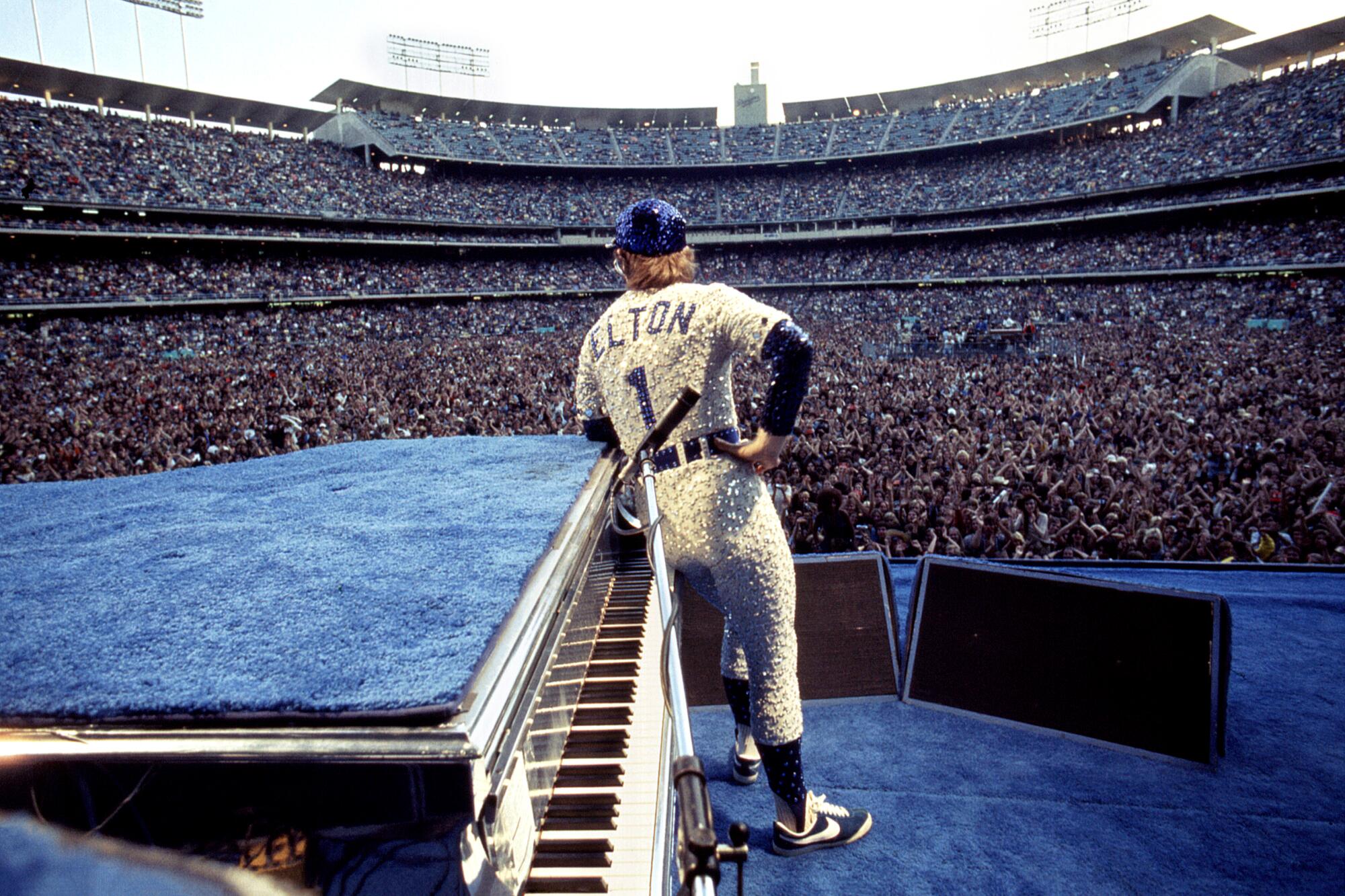
- Show more sharing options
- Copy Link URL Copied!
In October 1975, Elton John was the biggest pop star in the world. His last two albums, “Captain Fantastic and the Brown Dirt Cowboy” and “Rock of the Westies,” had entered the Billboard album chart at No. 1, a first for any artist. “No one had ever done that before,” he wrote in his 2019 memoir, “ Me .” “Not Elvis, not the Beatles.”
At 28, he was about to perform two sold-out shows at Dodger Stadium, where the last concert attraction was said Beatles in 1966. John and his manager/romantic partner, John Reid, had flown their friends and families, along with a British documentary film crew , from London to L.A. to help celebrate this milestone, and all had gathered at John’s secluded Beverly Hills estate the day prior to the Dodger Stadium concert to hobnob, sip champagne and fete the host. “And that,” wrote John, “was when I decided to try and commit suicide again.”
John goes on to say he had no intention of actually killing himself, having swallowed “a load of Valium” and thrown himself in his swimming pool in full view of his guests. His songwriting partner, Bernie Taupin , who was there that day, wholeheartedly agrees. “To be honest,” he writes in an email, ”it wasn’t that big a deal. Just our boy putting on a dramatic show for friends and relatives. He was very good at that!” John was still a year away from publicly revealing his bisexuality, as he framed it, to Rolling Stone, and was in the throes of an addiction trifecta, to drugs, food and sex. If life didn’t come easily to him, writing some of the rock era’s most indelible hit songs and performing them for thousands did. “It was the only time I really felt in control of what I did,” John wrote of playing live. Indeed, “twenty-four hours later I was onstage at Dodger Stadium.” The shows, he concluded with no false modesty, “were a complete triumph.”
This week, 47 years later, John returns to Dodger Stadium to perform three shows, on Nov. 17, 19 and 20, his last-ever U.S. concerts (so he says), as part of his long-running, wildly lucrative Farewell Yellow Brick Road tour. (The show on the 20th will be livestreamed on Disney+.) John, 75, has been sober for decades, and his husband, David Furnish, with whom John has two children, now serves as his manager. The tour kicked off way back in September 2018 and was supposed to run for three years, but COVID had other plans, and so John will head to Australia and then Europe for the final, final farewell shows in 2023, having already raked in well more than $600 million in what has become the third highest-grossing tour in history. In fact, if these Dodger Stadium shows feel like déjà vu, that’s because John already bid L.A. farewell , at the then-Staples Center, in January 2019.
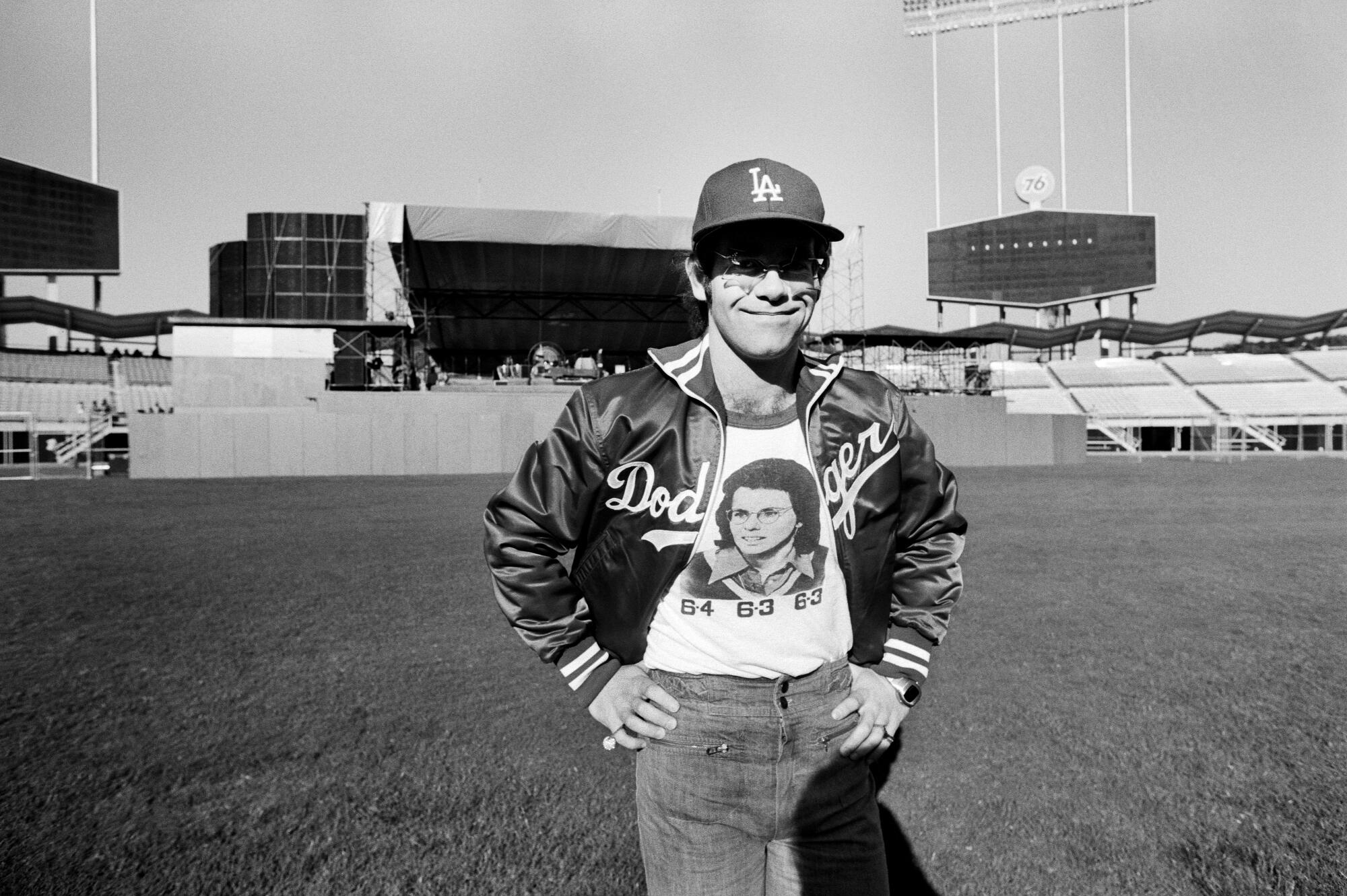
But John and L.A. have always enjoyed a special relationship, starting with the now almost apocryphal shows at the Troubadour nightclub in August 1970. Back in England, John was a skilled, hardworking piano player and tunesmith who had tried for years to gain a foothold in the business, with middling results. Paired by his record label with Americana-obsessed lyricist Bernie Taupin, John was already balding and bespectacled, short of stature and rock-star sex appeal, lacking the alien allure of a David Bowie or the rebel intensity of a John Lennon. But he had songs and gumption, and his American label pulled out all the stops for John’s American debut — Neil Diamond introduced him from stage, and Quincy Jones and one of John’s musical heroes, Leon Russell, were in the audience. More important, so was then-Times pop critic Robert Hilburn, who provided John the kind of rave, career-minting review that music-biopic screenwriters can only dream of as an Act 1 denouement: “Rejoice,” Hilburn exclaimed. “Rock music … has a new star. He’s Elton John … whose debut Tuesday night at the Troubadour was, in almost every way, magnificent.”
“It was the end of the ’60s,” says Hilburn today. “An era had ended. We’d been through all of that fire and rain. Elton was calmer, a little less frantic. He had those great songs that reminded me of the Band, and then there were Bernie’s lyrics: ‘I hope you don’t mind / that I put down in words.’ I loved that line.”
Elton John may be on his farewell tour, but he still has a lot left to say
Elton John’s autobiography “Me” arrives on the heels of his smash farewell tour, “Rocketman” biopic and what can only be described as personal contentment.
Oct. 14, 2019
Following those six nights at the Troubadour — the nine-song set opened with “ Your Song ” and included both a Beatles and Rolling Stones cover — John’s star was ascendant. By October 1972, he was headlining two nights at the Forum, on the heels of three consecutive Top 10 hits: “ Honky Cat ,” “ Rocket Man ” and his first-ever U.S. No. 1, “ Crocodile Rock .” John, like many of his ’70s peers, was outrageously prolific, and while his albums were uneven, his singles were unimpeachable (the sock-hop novelty “Crocodile Rock” notwithstanding).
In October ‘74, he was back at the Forum, this time for four nights, and headlong into what the Pet Shop Boys’ Neil Tennant once dubbed the “imperial phase” to describe the peak of a hitmaker’s career: Elton’s songbook now included “ Saturday Night’s Alright for Fighting ,” “ Goodbye Yellow Brick Road ,” “ Bennie and the Jets ,” “ Don’t Let the Sun Go Down on Me ” and “ The Bitch Is Back ,” razor-sharp hard rock, followed by cathartic longing for innocence, followed by magical proto soul-rap, followed by heart-stopping balladry, and then back to grinning, note-perfect riff rock, all casually filled with audio memes (“Bennie’s” “Moha Suuu,” “Don’t Let the Sun’s” “Don’t dizzzcard me”) that still won’t dislodge from your brain some 50 years on.
By the time 1975 rolled around, John was an unstoppable force. A friendship with tennis star and equal-rights champion Billie Jean King, struck at an L.A. party in ’73, led to his fourth No. 1 hit, “ Philadelphia Freedom ,” a tribute of sorts to King’s World TeamTennis club. Which is how King found herself onstage with John at Dodger Stadium on Oct. 25 and 26, in front of 55,000 fans, singing background vocals on “Philadelphia Freedom” and a handful of other songs. “Elton was so happy that day,” King tells The Times. “Everyone was so happy. I remember hanging backstage with Cary Grant and his daughter like it was yesterday.”
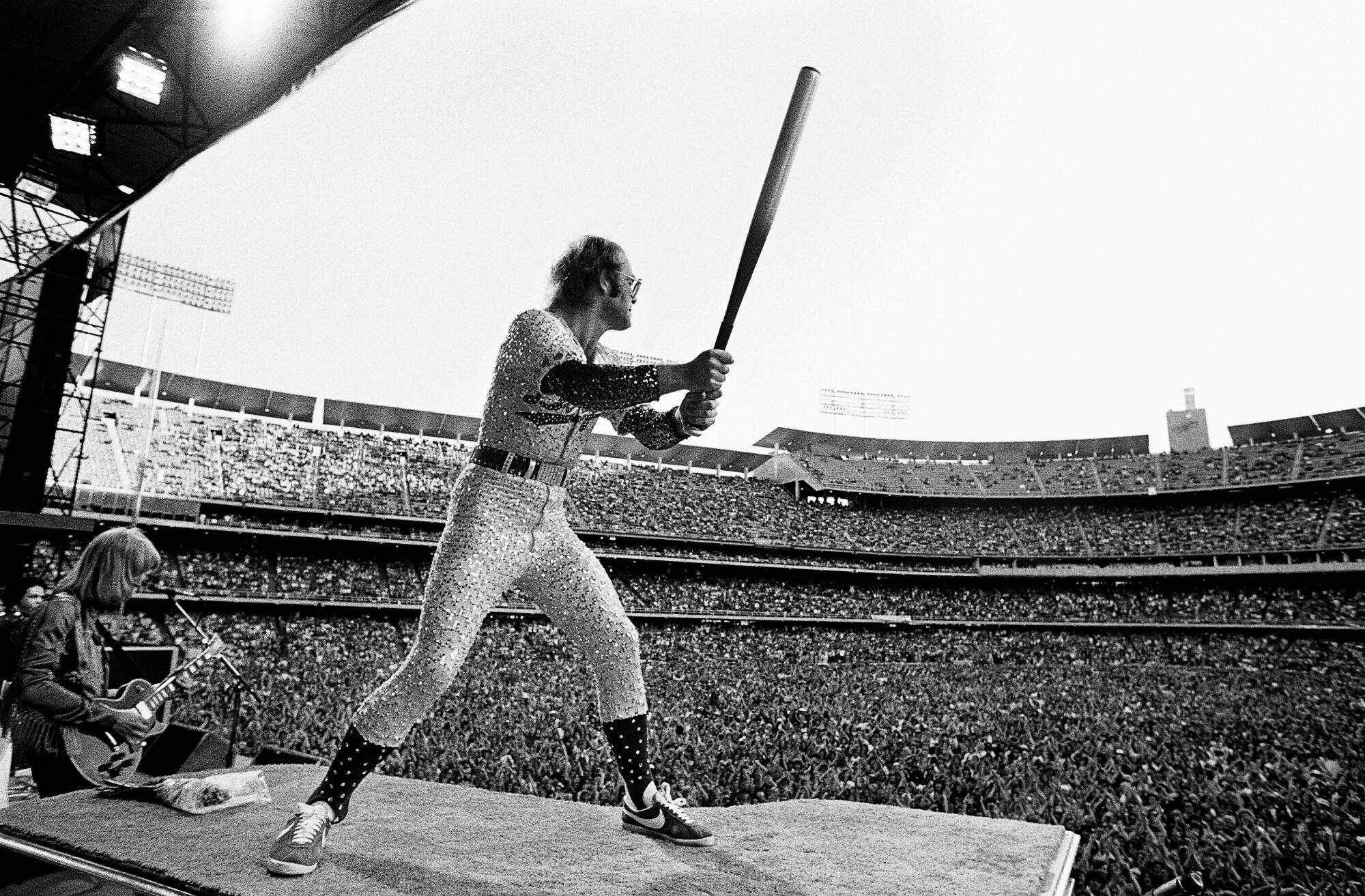
Cidny Bullens was about to go on the road as a backup singer with Bob Dylan’s Rolling Thunder Revue when John asked her to join his tour instead. (Bullens, then Cindy, transitioned in 2011, and uses she/her pronouns to refer to that stage of their career.) “And I picked Elton, because Elton was Elton,” says Bullens. He remembers one moment in particular from the two Dodger Stadium shows. “I believe it was the second day, and we were singing ‘Don’t Let the Sun Go Down on Me.’ The sun was going down behind Dodger Stadium, and we were onstage watching it go down, and everyone in the crowd had their Zippo lighters out. You could feel the hairs go up on everyone’s necks. I’ve done a lot of concerts in 50 years. That was the most profound moment I’ve ever had onstage.” He remembers that “Elton cried after the concert was over. I loved him for that.”
Because Elton was Elton, Dodger Stadium wasn’t just a concert, it was a pageant, a spectacle, a kitchen-sink showbiz extravaganza (all for a $10 general admission ticket). On Oct. 23, John, sporting a lime-green suit and matching bowler hat, had received a star on the Hollywood Walk of Fame. At Dodger Stadium, recalls Taupin, “our security team was dressed in pink satin jumpsuits and feather boas. I strolled around in a white suit with a baseball bat and a can of Coors.” Neck-kerchiefed TV staple Charles Nelson Reilly cavorted backstage.
Over the course of each 3 ½ hour concert, split into two sets, John was joined onstage by the 45-member Rev. James Cleveland Choir and by famed local car dealer Cal Worthington , accompanied by a real-live lion, one of the wild animals featured in his TV commercials. Ever shameless, John changed the “vodka and tonics” from “Goodbye Yellow Brick Road” to “tequila sunrises” as a sop to the locals (and maybe to the Eagles, whose new guitarist, Joe Walsh, opened the show.) And most famously, for the second sets, John came out dressed in a Bob Mackie-designed sequined Dodgers baseball uniform and cap, “ELTON” and the number “1” in Dodger blue on the back. In The Times, Hilburn called the concert “his finest hour here.” “Those are the gigs you live for,” John wrote in “Me.” “It was a pinnacle.”

John got his original Dodgers costume back from the Hard Rock Cafe earlier this year, and so, as with Kim Kardashian and Marilyn Monroe’s gown, perhaps a tailor can let it out a skosh (or two) for one quick reprise this week. Meanwhile, guitarist Davey Johnstone and percussionist Ray Cooper will perform alongside Elton as they did in 1975. (Longtime drummer Nigel Olsson is still with John, but wasn’t part of the band in ‘75). And don’t be surprised if Britney Spears, who made her comeback with John’s blessing and tunes on this summer’s Top 10 single “Hold Me Closer,” joins the all-star cavalcade of guests (Dua Lipa, Brandi Carlile, Kiki Dee) for Sunday’s swan song.
King and her wife, Ilana Kloss, have remained close friends with John over the years, absent a five-year period, King says, when John’s addiction-fueled behavior was too much for her to bear. She is now a minority owner of the Los Angeles Dodgers and will be at the shows this week. In 1975, she jumped off John’s piano at Dodger Stadium, at Elton’s behest. When asked if she’d repeat that for the farewell shows, she laughed: “I couldn’t jump over a credit card.” Bullens too is still friends with Elton — he wrote the forward to Bullens’ forthcoming memoir — and will be there on Thursday and Sunday.

Taupin, who took a rare turn onstage in ’75, “banging on a tambourine,” will of course be there, for all three concerts.
“Our relationship with L.A. has always been sacrosanct,” says Taupin, who lives in the Santa Ynez Valley. “It was here we flourished and found our sweet spot. L.A. embraced us before anyone, so we’re indebted. Not sure Elton would agree, but (to quote Grand Funk Railroad), we’re kind of an American Band from L.A.”

When Elton John became a rock star: The untold story of the Troubadour concert
When Elton John flew to Los Angeles to make his U.S. debut at the Troubadour on Aug. 25, 1970, the prospect of a visit to America was so tantalizing to his British pals that many accompanied him.
May 23, 2019
Hilburn has remained a fan of John’s all these years, noting his appreciation for some of John’s more recent albums, including one made in 2010 with Troubadour attendee Russell, and for John’s continued interest in and patronage of up and coming artists. “He’s never lost his love for music,” says Hilburn. “And he’s never lost the longing for that applause.”
As the clock nears midnight on Sunday and John works his way through those classic songs for a final time, he says, “I don’t know how they’re going to get him off that stage.”
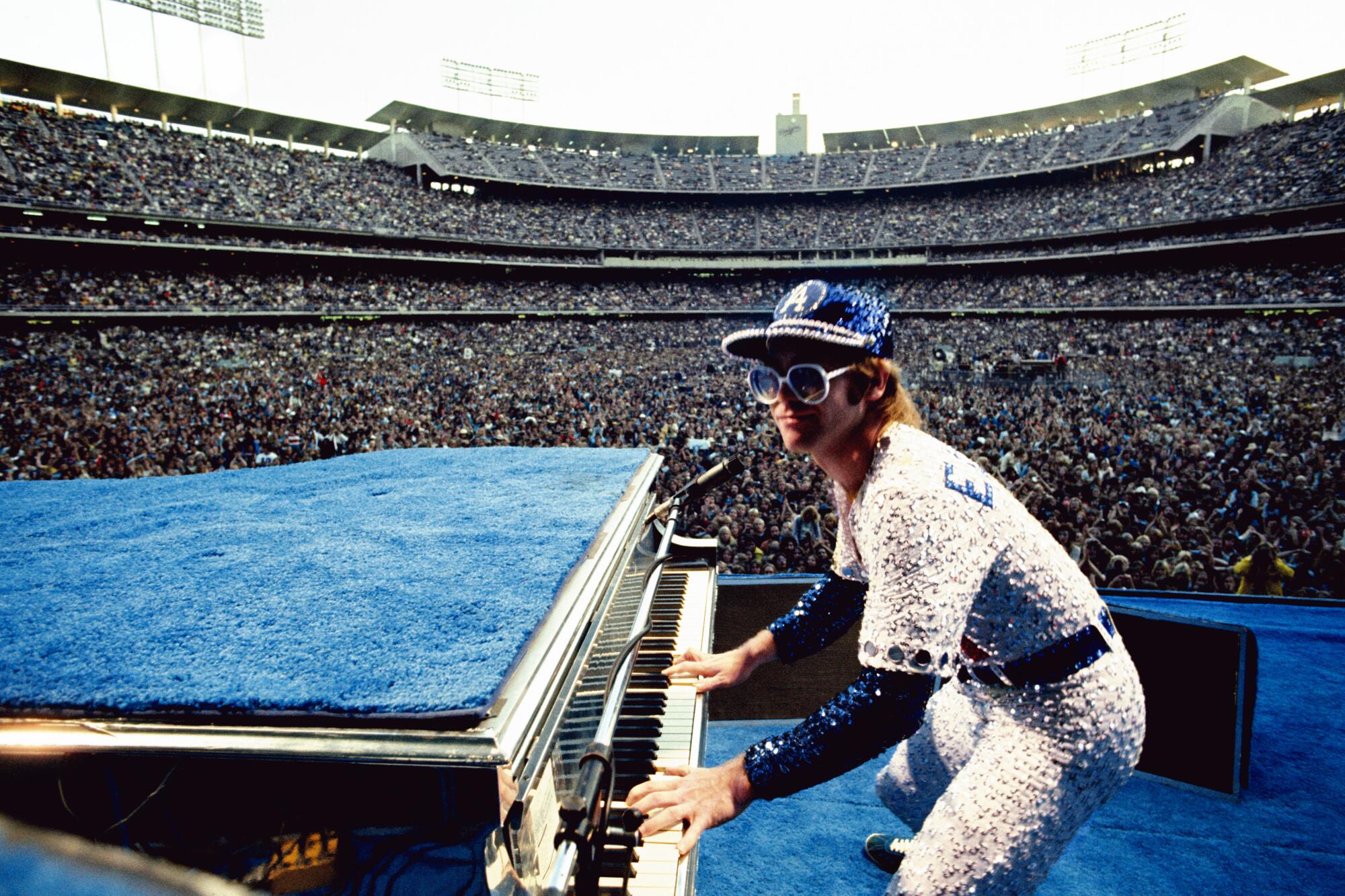
More to Read
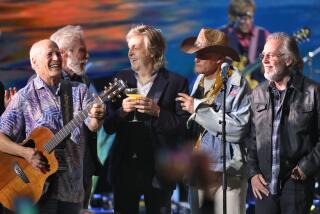
Jimmy Buffett tribute: Dave Grohl, the Eagles, Paul McCartney and everything that happened at the Bowl
April 11, 2024
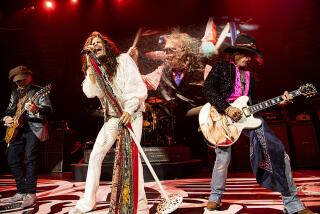
Aerosmith farewell tour is back on with new L.A. date, months after Steven Tyler injury
April 10, 2024
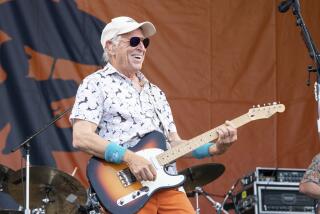
Paul McCartney and the Eagles will honor Jimmy Buffett at the Hollywood Bowl
March 11, 2024
The biggest entertainment stories
Get our big stories about Hollywood, film, television, music, arts, culture and more right in your inbox as soon as they publish.
You may occasionally receive promotional content from the Los Angeles Times.

Craig Marks is a former music editor for the Los Angeles Times. He previously served as the top editor of Spin, Blender and Billboard magazines. He is the co-author of the oral history “I Want My MTV: An Uncensored Story of the Music Video Revolution.”

More From the Los Angeles Times
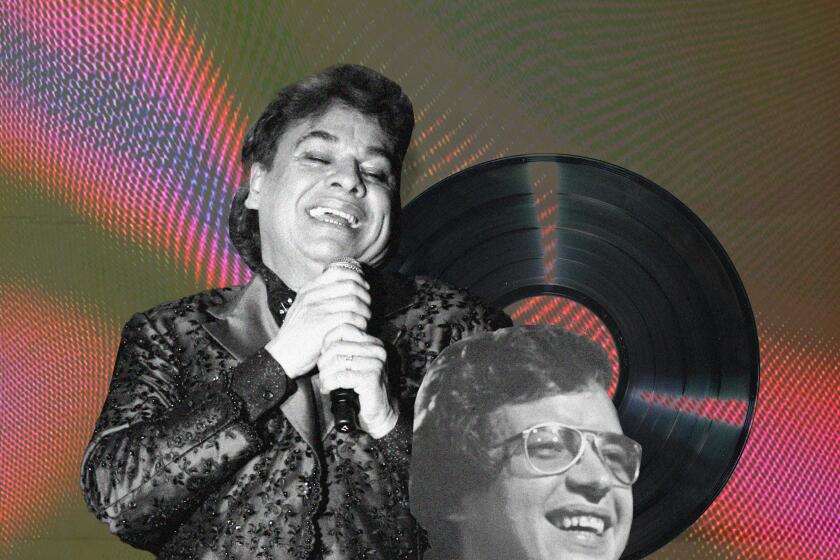
‘Amor Eterno’ and ‘El Cantante’ to be added to National Recording Registry

Coachella is bigger than ever. Where to find the best food spots for Weekend 2
April 16, 2024
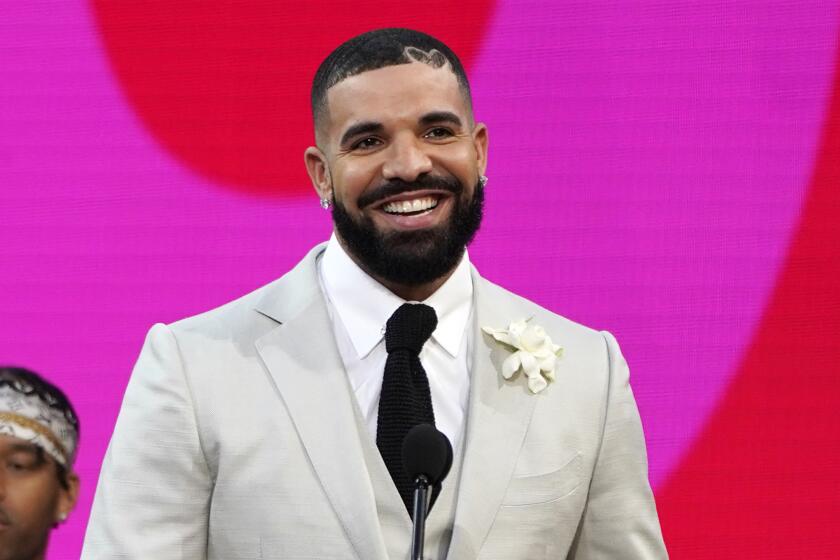
‘Push Ups’ — by Drake? — sparks AI speculation as more players join diss-track drama
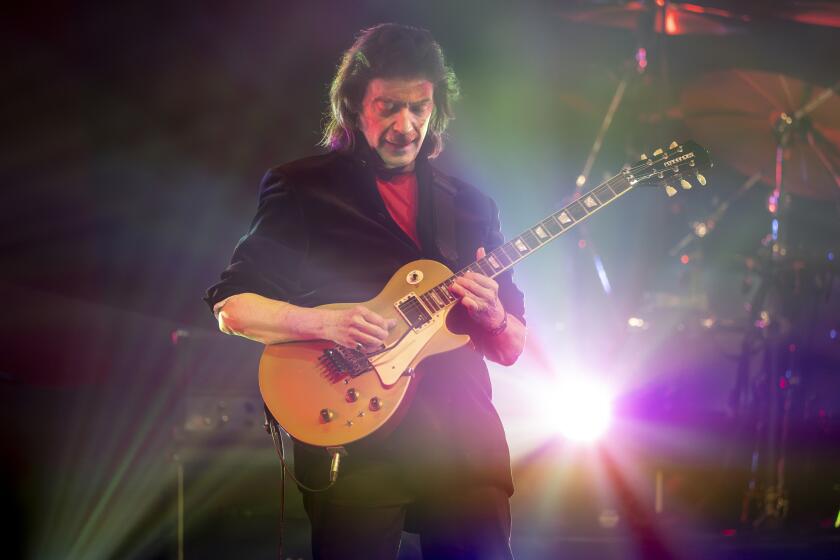
Former Genesis guitarist Steve Hackett hospitalized after adverse reaction to meds
- Manage Account
- Solar Eclipse
- Website Survey
- Voter Guide
- Things to Do
- Public Notices
- Help Center
arts entertainment Pop Music
See all of Elton John's tour stops in Dallas, from 1971 to 2018's farewell
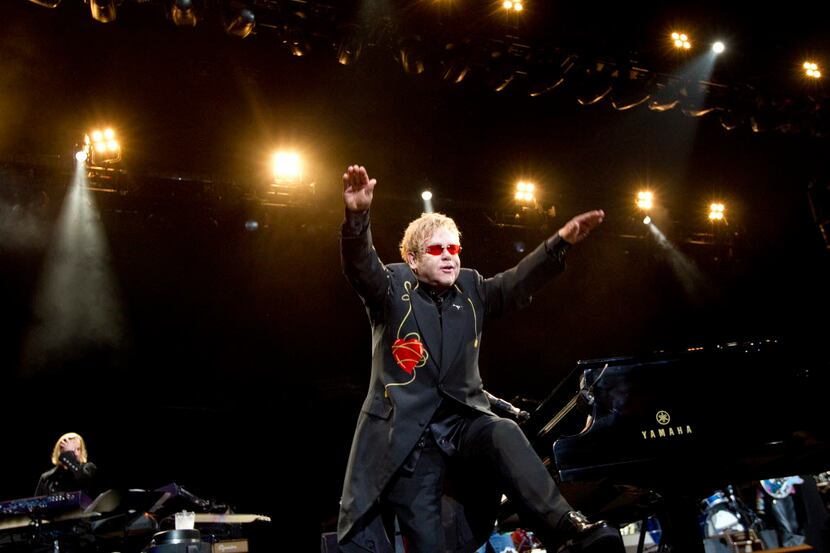
By Thor Christensen
8:00 AM on Dec 13, 2018 CST
If you take Elton John at his word, his Dec. 14-15 shows at American Airlines Center will be his last local appearances — ever.
"After the tour finishes, I'm very much looking forward to closing off that chapter of my life. ... I need to dedicate more time to raising my children," Sir Elton, 71, said in a January statement announcing Farewell Yellow Brick Road, a 300-city, three-year world trek that's being billed as his "last ever" tour.
But is this really the end? Or will the notoriously fickle singer change his mind and announce "The Bitch Is Back" tour in 2023, sort of like when he announced he'd "retired" from touring in 1977 and then unretired less than two years later?
Catch up on the day's news you need to know.
By signing up you agree to our Terms of Service and Privacy Policy
Whether this is indeed Elton's grand finale or just his farewell for now, it's one of the last chapters in the long history of one of rock's greatest showmen.
Here's a look at all the times the Rocket Man landed in our neck of the woods over the past five decades.
May 22-23, 1971, at Fair Park Music Hall and May 24, 1971, at Tarrant County Convention Center Theatre. Aptly enough, Elton's debut tour of Texas was in support of his Western-themed concept album Tumbleweed Connection.
Nov. 5, 1972, at Memorial Auditorium. Touring behind Honky Château, the singer played the 10,000-seat venue now known as the Kay Bailey Hutchison Convention Center Arena.
Aug. 18, 1973, at the Cotton Bowl. Headlining the third annual Cotton Bowl Spectacular , Elton previewed songs from his soon-to-be-released Goodbye Yellow Brick Road album. Opening act: Steely Dan.

Sept. 25, 1974, at Memorial Auditorium. Highlights on the Caribou tour included his new song "Don't Let the Sun Go Down On Me." Opening act: Kiki Dee.
Nov. 10, 1979, at Moody Coliseum. Returning from his short-lived "retirement," Elton performed mostly solo, with help from percussionist Ray Cooper.
Oct. 16, 1980, at Reunion Arena. Touring behind his now-forgotten 21 at 33 album, the singer played Reunion months after the 19,000-seat venue opened.
Sept. 29, 1984, at Reunion Arena. Most recent LP: Breaking Hearts. Most recent hit: "Sad Songs (Say So Much)."
Sept. 27, 1986, at Reunion Arena. Most recent LP: Leather Jackets. Elton later dubbed it the least favorite album in his discography.
Sept. 30, 1988, at Coca-Cola Starplex Amphitheater . Now known as Dos Equis Pavilion, Starplex was just 3 months old when the singer arrived on his Reg Strikes Back tour.
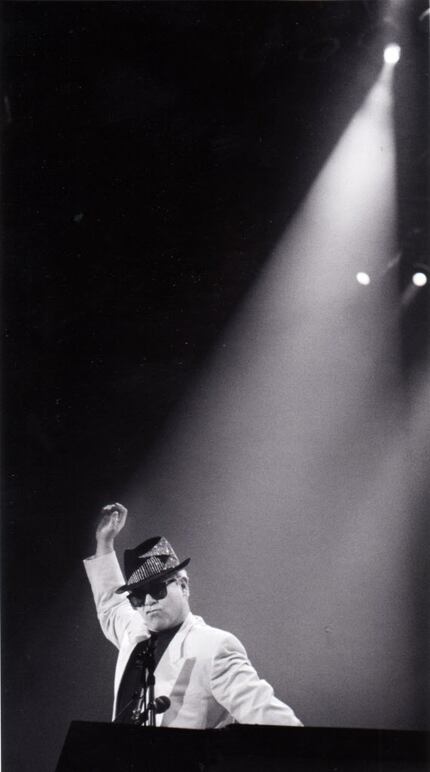
Aug. 11, 1989, at Coca-Cola Starplex Amphitheater. Elton's last tour before kicking his drug and alcohol addictions in 1990.
Oct 25, 1992, at Coca-Cola Starplex Amphitheater. Most recent hit: "The One," from the album of the same name.
Oct. 10, 1993, at Coca-Cola Starplex Amphitheater. Taking a cue from 1979, he played a mostly solo show, with percussion help from Cooper.
April 2, 1995, at Texas Stadium. On the second in a series of lucrative Face to Face tours, Elton and Billy Joel drew 44,000 fans to the home of the Cowboys.
Jan. 28, 1998, at Reunion Arena. Most recent hit: "Candle in the Wind 1997," his record-shattering tribute to the late Princess Diana.
Aug. 8, 1998, at Starplex Amphitheater. Most recent album: The Big Picture .
Feb. 28, 2003, at American Airlines Center. Another Face to Face tour with the Piano Man.
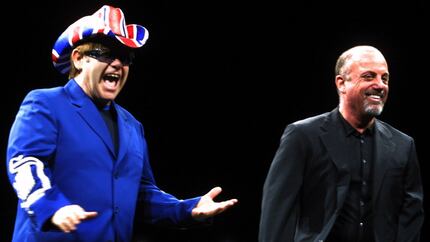
March 24, 2005 at American Airlines Center. Backed by the Voice of Atlanta choir, Elton played gospel-fired versions of his hits and songs from Peachtree Road .
Oct. 25, 2006, at the Meyerson Symphony Center. This rare non-arena solo show was a fundraiser for the future AT&T Performing Arts Center.
Nov. 13, 2010, at the Fort Worth Convention Center Arena. Part of a short tour with the late Leon Russell, this show featured both singers' hits and songs from their album The Union.
March 13, 2014, at American Airlines Center . On his Follow the Yellow Brick Road tour, Elton gave short shrift to his recent album The Diving Board and instead played 10 songs from 1973's Goodbye Yellow Brick Road , much to the crowd's delight.
More photos of Elton John through the years in D-FW:

Thor Christensen . Thor Christensen is a former pop music critic for The Dallas Morning News and The Milwaukee Journal whose work has appeared in The New York Times and several books, including Musichound: The Essential Album Guide (Visible Ink Press). He’s interviewed two Beatles, a pair of Rolling Stones and hundreds of musicians from Beyoncé to Bono to David Bowie. He’s a Chicago native and a longtime resident of East Dallas.
Top Arts & Entertainment Stories
Photos: selena day celebrates the life the queen of tejano at at&t discovery district, shakira heading to dallas on 14-city world tour, the most dallas buildings in dallas, explained, the designers didn’t get along. they created a dallas masterwork anyway, judge to hear motion to drop rapper travis scott from suit over deadly astroworld concert.
- Manage Account
2024 Gershwin Prize Salute to Elton John & Bernie Taupin: All the Performances Ranked
Artists from Metallica to Garth Brooks came to sing the team's songs -- and their praises.
By Paul Grein
- Share this article on Facebook
- Share this article on Twitter
- Share this article on Flipboard
- Share this article on Pinit
- + additional share options added
- Share this article on Tumblr
- Share this article on Reddit
- Share this article on Linkedin
- Share this article on Whatsapp
- Share this article on Email
- Print this article
- Share this article on Comment

You don’t want to miss Elton John & Bernie Taupin: The Library of Congress Gershwin Prize for Popular Song , which will air in primetime on PBS stations nationwide on Monday (April 8). (Check local listings.)
The two-hour special was taped during a tribute concert at DAR Constitution Hall in Washington, D.C. on March 20. Billboard had a (lucky) correspondent in the room, who filed this report .
The success of the show is a tribute to the quality and range of the songs written by Elton John and Bernie Taupin , of course, and also to smart production choices by Ken Ehrlich, who executive produced and wrote the show. Ehrlich, who oversaw the annual Grammy telecast for 40 years, incorporated talk segments with both songwriters, as well as Elton’s long-time music director Davey Johnstone ; past Gershwin Prize recipients Sir Paul McCartney (the only previous British honoree), Carole King , Stevie Wonder and Emilio & Gloria Estefan ; and Robert Hilburn, the former Los Angeles Times pop music critic whose rave review of Elton’s 1970 show at the Troubadour in L.A. gave the singer a big boost.
Those talk segments provide much context and insight. In one, Elton said how much American music has always meant to him. “Thank you, America, for the music you’ve given us all over the world. It’s an incredible legacy that you have – all the wonderful blues, the jazz, classical, all the songs the Gershwin brothers [George and Ira] wrote. It’s just incredible. … I’m so proud to be British and to be here in America to receive this award, because all my heroes were American.”
Elton also put his music with Bernie in the context of the Great American Songbook. “We write songs that we hope will last. And our songs have lasted – and so have the Gershwins, Rodgers & Hammerstein, all those wonderful people. The Cole Porters of the world. They wrote classic songs, and once you write a classic that people love, it never goes away.”
Elton’s band backed the various artists, leading Elton to say “This is the first time in my life where I have sat in the audience and listened to my band. And I know they’re good, but they’re amazing!” He also paid the ultimate tribute to his partner. “He gives me the lyrics and then I write the song. Without the lyrics, I’d be working in any record store in the world.”
Elton John and Bernie Taupin: The Library of Congress Gershwin Prize for Popular Song is a co-production of WETA Washington, D.C.; Ken Ehrlich Productions, Inc.; and the Library of Congress. It will be available via broadcast and streaming on PBS.org and the PBS App.
An end title card dedicated the show to Tony Bennett , the 2017 Gershwin Prize recipient, who died in July at 96. The show honoring Bennett and last year’s show honoring Joni Mitchell both received Primetime Emmy nods . This show also deserves Emmy consideration.
All but one of the 14 songs performed on the show appeared on Billboard ’s 2022 ranking The 75 Best Elton John Songs: Staff List, which was keyed to the star’s 75th birthday that year. If you missed it, here it is. Read it before or after the show, but not during. You don’t want to miss a moment.
Here are all the performances on the show ranked from least to most memorable. (Three artists performed multiple songs. We listed their songs together.) No shade to the performers who aren’t ranked high: The competition for “best of the night” honors was fierce. And how can Elton not be No. 1 on his own tribute? We’ve all heard him sing his songs many times, so there was no element of surprise there like there was with the top three selections.
Charlie Puth, “Don’t Let the Sun Go Down on Me” (1974)
Puth, at 32 the youngest artist on the bill, seemed a little daunted by the task of performing this stately rock ballad, but he pulled it off. Still, it won’t make anyone forget either Elton’s original, which reached No. 2 on the Hot 100 in 1974, or the 1991 George Michael/Elton John pairing that went all the way to No. 1.
Maren Morris, “I Guess That’s Why They Call it the Blues” (1983)
The pop and country singer did a fine job on this ballad, which Taupin said that he regards as one of their best songs. “It’s definitely one of our finest songs…I mean, it’s a simple song, but it’s a beautiful song.” It’s also the only song performed on the show that wasn’t written by Elton and Bernie alone. Davey Johnstone joined them in writing this song.
Annie Lennox, “Border Song” (1970)
Lennox opened the show by performing this gospel-inflected ballad, which Aretha Franklin turned into a top 40 hit on the Hot 100 in late 1970. The Queen of Soul’s version entered the top 40 the same week (Dec. 19, 1970) as Elton’s first top 40 hit as an artist, “Your Song” — so his songs were his calling card from the start.
Brandi Carlile, “Madman Across the Water” (1971) and “Skyline Pigeon” (1969)
Carlile performed these two early album cuts in separate spots on the show. The tender ballad “Sky Pigeon” was a perfect choice to follow an emotional, but overlong, segment that featured Elton’s work with the Elton John AIDS Foundation, as well as his friendship with Ryan White.
Garth Brooks, “Sorry Seems to Be the Hardest Word” (1976) and “Daniel” (1973)
Brooks, the 2020 Gershwin Prize recipient, ably performed these top 10 Hot 100 hits in separate spots on the show. Kim Bullard’s accordion break in the torch song “Sorry Seems to Be the Hardest Word” was intriguing and highly effective.
Billy Porter, “The Bitch is Back” (1974)
Porter, who also hosted the show, performed this song from the center aisle in the audience. In addition to being the hardest-rocking single Elton ever took to the top 10 on the Hot 100, this song speaks to the inner brat in all of us: Who wouldn’t occasionally like to cut loose and say “I don’t like those!/ My God, what’s that?”
The song still has the electric jolt that it brought to pop radio in 1974, when it went up against more sedate hits by the likes of John Denver and Olivia Newton-John. Porter (rather needlessly) said, “Listen, it’s 2024. I don’t want you to be offended by the word ‘bitch.’ The queer community uses it as a love letter.” If “bitch” could fly on the radio 50 (gulp) years ago, it’s a non-issue in this much more permissive era.
Elton John, “Mona Lisas and Mad Hatters” (1972), “Saturday Night’s Alright for Fighting” (1973) and “Your Song” (1970)
Even with 29 top 10 hits on the Hot 100 to choose from for his three-song mini-set, it’s interesting that Elton selected an album track, “Mona Lisas and Mad Hatters” (from 1972’s Honky Chateau ). He also chose “Saturday Night’s Alright…,” a Stones-like rocker that, on Billboard ’s 2022 list, Melinda Newman called “an unadulterated blend of youthful joy and aggression.” Elton was 26 when it was released. He’s now 77 – a reminder that youthfulness is an attitude, not a number.
“Your Song” is probably Elton’s most universally beloved song – and for good reason. The ballad marries a graceful melody to a wonderfully conversational lyric. “It may be quite simple,” Elton sings, and that simplicity is at the heart of the song’s appeal. In her remarks, Carole King called the song “perfection” – and she knows a thing or two about writing perfect pop songs.
Jacob Lusk, “Bennie and the Jets” (1973)
Lusk, the lead singer of Gabriels, was probably the least well-known performer on the bill. Lusk performed “Are You Ready for Love” alongside Elton at the Glastonbury Festival last June, but he hasn’t really broken through in the U.S. yet.
His highly theatrical, falsetto performance of this smash, which got the audience on its feet, should raise his profile. This “spaced-out” song is one of the most eccentric songs in Elton’s catalog of hits. The choice in early 1974 to go with this as a single, rather than a more typical Elton track like “Harmony” or “Candle in the Wind,” was one of the boldest and ultimately smartest of his career.
The song ranked No. 7 on Billboard ’s 2022 list of Elton’s best songs. Andrew Unterberger wrote “It plays almost like a parody of glam rock… Elton and Bernie may have ultimately been too tradition-bound at heart to really fit into glam full-time, but they have great fun trying on the furs for one song.”
Metallica, “Funeral for a Friend / Love Lies Bleeding” (1973)
This two-part opus, a highlight of Elton’s 1973 double-album masterwork Goodbye Yellow Brick Road , topped Billboard ’s 2022 list of Elton’s 75 best songs. Metallica amped up the rock component considerably, taking it from about 6.5 to 10 (if not 11). The result was undoubtedly the hardest-rocking number in the history of the Gershwin Prize event. At night’s end, Bernie praised Elton’s band, calling them “the best band in the world – outside of Metallica, of course.”
Joni Mitchell (with Brandi Carlile and Annie Lennox), “I’m Still Standing” (1983)
We are so used to hearing this as a spunky, sassy pop song, can you even imagine it slowed-down? Well, damn if it doesn’t work that way too! Mitchell, the 2023 Gershwin Prize recipient, performed it as a jazzy, mid-tempo ballad, which brought out the song’s sly humor. She also changed some lyrics, with Elton and Bernie’s permission, which superfan Brandi Carlile said “is honestly the most Joni Mitchell thing I’ve ever heard of.”
Elton and Bernie wrote this song to celebrate Elton’s surviving some career and personal downs in the late ’70s and early ’80s. Those were ordinary struggles compared to the back-from-the-brink challenges Mitchell has overcome: Nine years ago, she suffered a brain aneurysm rupture, which required her to undergo physical therapy and learn to walk again. (That was unspoken, but obvious to people who know her story.) At one point, Mitchell waved the walking stick she still needs to get around in the air. That defiant gesture added to the song’s sense of uplift – and the show’s sense of triumph.
Get weekly rundowns straight to your inbox
Want to know what everyone in the music business is talking about?
Get in the know on.
Billboard is a part of Penske Media Corporation. © 2024 Billboard Media, LLC. All Rights Reserved.
optional screen reader
Charts expand charts menu.
- Billboard Hot 100™
- Billboard 200™
- Hits Of The World™
- TikTok Billboard Top 50
- Song Breaker
- Year-End Charts
- Decade-End Charts
Music Expand music menu
- R&B/Hip-Hop
Culture Expand culture menu
Media expand media menu, business expand business menu.
- Business News
- Record Labels
- View All Pro
Pro Tools Expand pro-tools menu
- Songwriters & Producers
- Artist Index
- Royalty Calculator
- Market Watch
- Industry Events Calendar
Billboard Español Expand billboard-espanol menu
- Cultura y Entretenimiento
Honda Music Expand honda-music menu

Remember When: Elton John’s Classic Song “Bennie and the Jets” Became His Second No. 1 ‘Billboard’ Hot 100 Hit
E lton John scored his second No. 1 hit on the Billboard Hot 100 with “Bennie and the Jets” 40 years ago, on April 13, 1974. John’s first Hot 100 chart-topper was “Crocodile Rock,” which spent three weeks at No. 1 in February 1973.
“Bennie and the Jets” was the third single released in the U.S. from John’s Goodbye Yellow Brick Road album, which spent eight straight weeks at the top of the Billboard 200 chart at the end of 1973. The previous singles released from the double album, “Saturday Night’s Alright for Fighting” and the title track, peaked at No. 12 and No. 2, respectively, on the Hot 100.
[RELATED: Elton John Praises Real Estate’s “Beautiful” Rendition of His Hit “Daniel” at Unique Album-Release Event]
“Bennie and the Jets” is a unique song that doesn’t sound like anything John had released before or has put out since. Coming in the wake of the U.K.’s glam-rock craze, Bernie Taupin’s lyrics sing the praises of a fictional futuristic band that he imagined were made up of androids and fronted by a beautiful androgynous woman. John’s music was his own homage to glam rock.
About the Recording of “Bennie and the Jets”
Although “Bennie and the Jets” is a studio recording, certain elements make it sound as if it were recorded live at a concert. During the recording of the song, John had played the piano chord that starts the song a bar early, and when producer Gus Dudgeon heard the playback, it reminded him of the way a band might kick off a song at a show. Dudgeon decided to create the illusion of a live track by adding real crowd noise and other effects.
The producer mixed in sounds taken from a 1972 John concert at Royal Festival Hall in London and Jimi Hendrix’s 1970 performance at the Isle of Wight Festival. He also added whistles from a live show in Vancouver, Canada.
“Bennie and the Jets” Also Was a Soul Hit
“Bennie and the Jets” also became John’s first Top-40 hit on Billboard ’s Hot Soul Singles chart, reaching No. 15 on that tally. The song’s success on that chart led to John’s 1975 appearance on the TV show Soul Train .
According Songfacts , John was a big Soul Train fan and he asked to appear on the show. He became one of the first white artists to perform on the program. During his appearance, he played “Bennie and the Jets” and “Philadelphia Freedom.”
On the Enduring Popularity of “Bennie and the Jets”
“Bennie and the Jets” went on to be certified double platinum by the RIAA for equivalent sales of 2 million in the U.S. In 2024, the tune was ranked No. 371 on Rolling Stone ’s list of “The 500 Greatest Songs of All Time.”
The post Remember When: Elton John’s Classic Song “Bennie and the Jets” Became His Second No. 1 ‘Billboard’ Hot 100 Hit appeared first on American Songwriter .
Follow us on MSN: Click here


IMAGES
VIDEO
COMMENTS
2010 Tour (37) 40th Anniversary of the Rocket Man (45) A Journey Through Time (11) A Single Man (83) All the Hits Tour (87) An Evening with Elton John (58) An Evening with Elton John and Ray Cooper (23) Back in the U.S.S.A. (43) Breaking Hearts (62) Caribou (50) Don't Shoot Me I'm Only The Piano Player (29) Elton John 1970 World Tour (69)
Fall 1973 Tour 17 songs Setlist from 22 Dec 1973: Funeral For A Friend/Love Lies Bleeding Candle In The Wind Hercules Rocket Man Bennie And The Jets Daniel This Song Has No Title Honky Cat Goodbye Yellow Brick Road The Ballad of Danny Bailey (1909-1934) Elderberry Wine Rudolph The Red Nosed Reindeer I've Seen that Movie Too All The Girls Love ...
John's most recent tour is the Farewell Yellow Brick Road tour, intended as John's final tour which concluded in July 2023. John has said that he will continue to "do the odd show" despite his retirement from touring. Tours. Elton John 1970 World Tour (1970) Goodbye Yellow Brick Road Tour (1973-1974) Caribou Tour (1974)
Elton John's 1972 Concert History. Sir Elton John began playing piano at a young age and when he was just 15 years old was hired to perform as a pianist at the Northwood Hills Hotel pub. In 1962, he formed his first band, Bluesology, and in 1967 began a song-writing partnership with Bernie Taupin that continues to this day.
Elton John. Sep 23, 1973 (50 years ago) Madison Square Garden New York, New York, United States. Scroll to: ... Buy tickets to Elton John: ... Elton John info along with concert photos, videos, setlists, and more. Search
Elton John live at the Hollywood Bowl in Los Angeles on September 7th, 1973.Goodbye Yellow Brick Road 01:06Crocodile Rock 04:01All the Girls Love Alice 08:33...
Elton John audience recording from the Indiana University Assembly Hall in Bloomington, Indiana on October 7, 1973 during the Summer 1973 Tour. This recordin...
Elton pulled out all the stops for his September 7, 1973, show at the Hollywood Bowl. The show began with an introduction by porn star Linda Lovelace and, as Elton descended the staircase on to the stage, doves were released from five grand pianos by impersonators of Queen Elizabeth, Elvis Presley, Frankenstein's Monster, the Pope, The Beatles, Batman and Robin, Mae West, and Groucho Marx.
The inimitable Elton John this weekend. In concert at the Hammersmith Odeon in London, and recorded by the venerable BBC Radio 1 as part of their In Concert Series on December 22, 1973. No need to point out that Elton John is a household name, and has been the better part of 40 years. With a well publicized and documented career, Elton John ...
1973 Elton John and partners launch Rocket Records label, used mostly for other artists. 22 January 1973 Don't Shoot Me, ... Issue 4, September 27, 1973. Elton John's 1979 Tour of the Soviet Union," Wikipedia.org. "1970s Decade Overview," RockMusicTimeline .com. "Photos: Elton John's Outfits Through the Years; See All the ...
May 27, 1974 Wembley Arena, London, ENG. June 14, 1974 Nassau Coliseum, Uniondale, NY (joined the Beach Boys for their encore of "Barbara Ann" & "Surfin' USA") Elton John & Kiki Dee US Tour 1974. September 25, 1974 Convention Center, Dallas, TX. September 26, 1974 Hofheinz Pavilion, Houston, TX.
Goodbye Yellow Brick Road is the seventh studio album by English singer, pianist, and composer Elton John, first released on 5 October 1973 as a double album by DJM Records.The album has sold more than 20 million copies worldwide and is widely regarded as John's magnum opus.Among the 17 tracks, the album contains the hits "Candle in the Wind," US number-one single "Bennie and the Jets ...
Early life. Elton John was born Reginald Kenneth Dwight on 25 March 1947 in Pinner, Middlesex (now part of the London Borough of Harrow), the eldest child of Stanley Dwight (1925-1991) and only child of Sheila Eileen (née Harris; 1925-2017). He was raised in a council house in Pinner by his maternal grandparents. His parents married in 1945, when the family moved to a nearby semi-detached ...
"I had a very big, bold vision for what I thought Elton's fans would want in a farewell tour - which we decided to call 'Farewell Yellow Brick Road,'" a reference to his massive hit 1973 album,Goodbye Yellow Brick Road, says David Furnish, Elton's husband and the tour's Creative Director. "What would be the best way to celebrate ...
Nicknamed "The Starship" and emblazoned with "Elton John Band Tour 1974" along the fuselage, the custom-designed (bedroom, fake fireplace, 30-foot brass-trimmed bar with electric organ included, etc.) Boeing 720 had also been used by Elton the year before and allowed the band to use a few cities across America as hubs…as opposed to ...
first USA tour. 23 Nov 1970. Glassboro State College. Glassboro, NJ, USA. first USA tour. details. Elton John and Easy Wind were the opening acts for Poco concert. 25 Nov 1970. Auditorium Theatre.
Elton John will take his final bow at Dodger Stadium. So let's time travel back to his legendary 1975 concert. Elton John performing at Dodger Stadium in October 1975. "Elton was so happy that ...
Elton John 1975 Concerts: Elton John performed an 80-minute concert for 2000 fans. Elton was invited to open the Rolling Stones concert by playing on "Honky Tonk Women", but remained on stage for most of the show, despite the intentions of the band. Billie Jean King and Kiki Dee joined the backup singers during the final encore.
On his Follow the Yellow Brick Road tour, Elton gave short shrift to his recent album The Diving Board and instead played 10 songs from 1973's Goodbye Yellow Brick Road, much to the crowd's delight.
Watford Town Hall. Watford, UK. Winter 1972 Tour. 26 Feb 1972. Waltham Forest Technical College. Waltham Forest, UK. Winter 1972 Tour. 27 Feb 1972. Shaw Theatre NYT.
This two-part opus, a highlight of Elton's 1973 double-album masterwork Goodbye Yellow Brick Road, topped Billboard's 2022 list of Elton's 75 best songs. Metallica amped up the rock ...
Elton John scored his second No. 1 hit on the Billboard Hot 100 with "Bennie and the Jets" 40 years ago, on April 13, 1974. John's first Hot 100 chart-topper was "Crocodile Rock," which ...